Issue 104
April-May 2023
For Active Adults in Central New York cny55.com

Issue 104
April-May 2023
For Active Adults in Central New York cny55.com

International Boxing Hall of Fame: a Labor of Love for Longtime Executive Director P.28
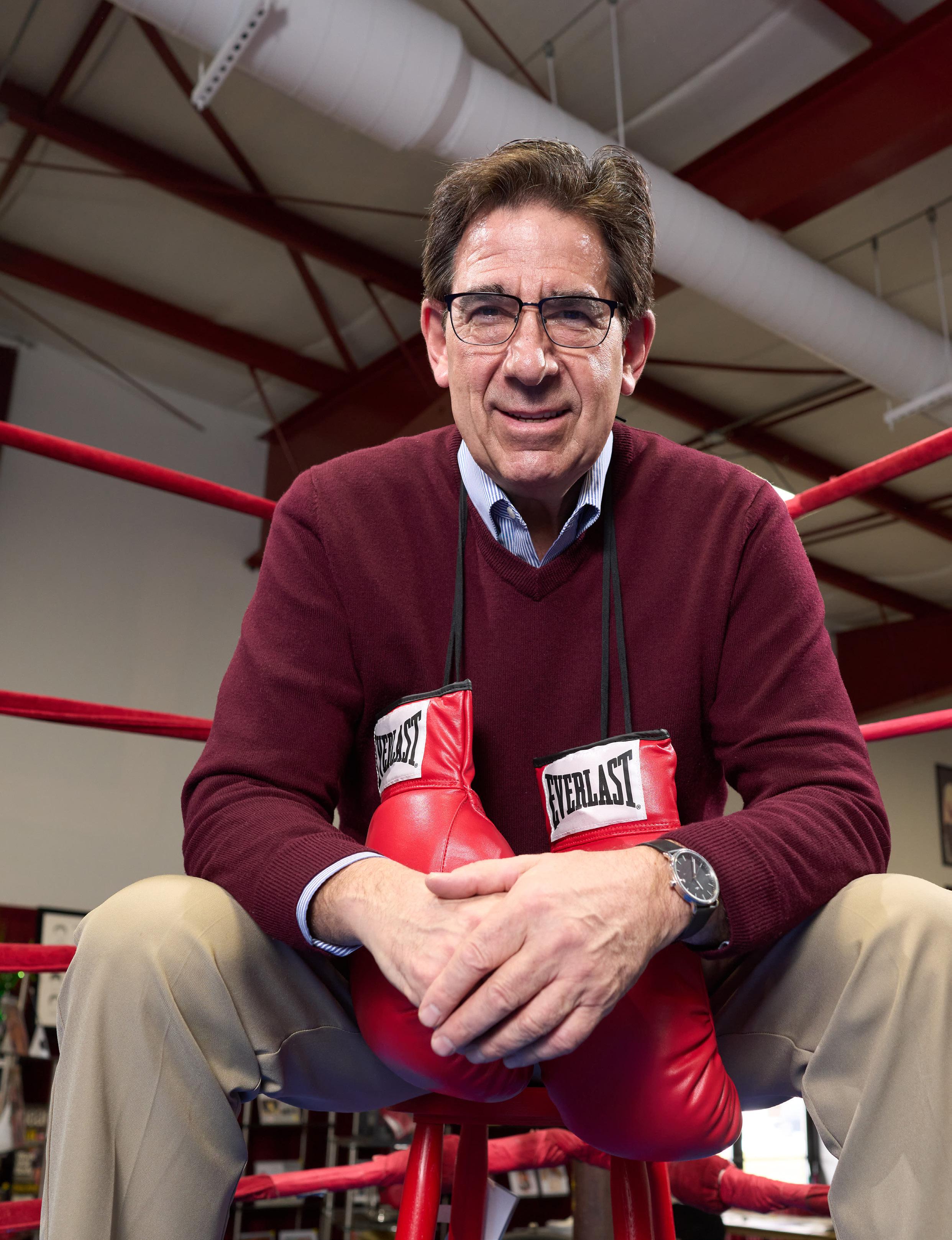
ALSO IN THIS ISSUE
Gray Wolves Continue to Prowl the Rinks P.36
SUNSHINE HORSES IN CLAY: Helping Horses, Helping People For 20 Years, and Counting P.16
The Newest 55-Plussers: Here Comes Gen X P.20

It’s about more than just weight loss. It’s about reducing your risk for serious conditions like heart disease and diabetes — and regaining the stamina, mobility and confidence to take on every day.

Crouse’s bariatric surgery program offers a dedicated team of physicians and providers, as well as psychological and nutritional counseling — all with the expertise to support you every step of the way.


Begin the process from home by viewing our online informational video. Then consult with our bariatric team via telemedicine visits to start your journey. It’s time — and now easier than ever.
Start today at crouse.org/weightloss or call .




LAST PAGE
Peter Dunn, 57, quadrupled CNY Community Foundation’s assets — from $110 million to $399 million. He is stepping down in June.

April-May 2023
Do you have story ideas, or would you like to advertise in 55 Plus? Send an email to editor@cny55.com or call 315-342-1182.
To subscribe to the magazine, look for the coupon on page 49
www.cny55.com
12 TRENDS
• Number of older adults in CNY grows faster than most cities in New York state.
16 HORSES
• Sunshine Horses in Clay: helping horses, helping people.

20 GENERATIONS
• GenX’s coming. Yes, they are quietly growing older.
24 MUSEUMS
• Tour guides in Syracuse museums add a new dimension to visitors’ experience.
28 COVER STORY
• International Boxing Hall of Fame a labor of love for longtime Executive Director Ed Brophy.


32 PAINTINGS
• Tim Ames’ life is a work of art — and then some.
36 SPORTS
• Gray Wolves continue to prowl the rinks

40 MUSIC
• Colin Aberdeen: frontman for Los Blancos still draws crowds.
42 PRESERVATION
• Keepers of the Central New York history.

46 COLLEGE
• Team of about 130 volunteers assists first-generation students get in and remain in college.
50 POLITICS
• DeWitt town supervisor never envisioned to run for office. Then in 2007 he changed his mind.
64 BILLS
• Making bill paying easier


If you’re looking to help advance medical research, and in the process eliminate your funeral and burial costs, donating your body to science is a great option to consider. Here’s what you should know.
Each year, it’s estimated that approximately 20,000 people donate their whole body, after death, to medical facilities throughout the country to be used in medical research projects, anatomy lessons and surgical practice.
After using your body, these facilities will then provide free cremation and will either bury or scatter your ashes in a cemetery or return them to your family. And, just in case you’re wondering, your family cannot not be paid for the use of your body. Federal and state laws prohibit it.
Here are a few other things you need to know and check into, to help you determine whether whole-body donation is right for you:
• Donation denial : Most body donation programs will not accept bodies that are extremely obese, or those that have infectious diseases like hepatitis, tuberculosis, H.I.V. or MRSA. Bodies that suffered extensive trauma won’t be accepted either.
• Organ donation : Most medical school programs require that you donate your whole body in its entirety. So, if you want to be an organ donor (with the exception of your eyes), you probably won’t qualify to be a wholebody donor too.
• Religious considerations : Most major religions permit individuals to donate both their full body and organs, and many even encourage it. If you are unsure, you should consult with your pastor or spiritual adviser.
• Special requests: Most programs will not allow you to donate your body for a specific purpose. You give them the body and they decide how to use it.
• Memorial options: Most programs require almost immediate transport
of the body after death, so there’s no funeral. If your family wants a memorial service, they can have one without the body. Or, some programs offer memorial services at their facility at a later date without the remains.
• Body transporting: Most programs will cover transporting your body to their facility within a certain distance. However, some may charge a fee. How to Proceed
If you think you want to donate your body, it’s best to make arrangements in advance with a body donation program in your area. Most programs are offered through university-affiliated medical schools. To find one near you, the University of Florida maintains a list of U.S. programs and their contact information at Anatbd.acb.med.ufl. edu/usprograms. If you don’t have internet access, you can get help by calling the whole-body donation referral service during business hours at 800-727-0700.
In addition to the medical schools, there are also private organizations like Science Care (ScienceCare. com) and Anatomy Gifts Registry (AnatomyGifts.org) that accept whole body donations too. Some of these organizations will even allow organ donation because they deal in body parts as well as whole cadavers.
Once you locate a program in your area, call and ask them to mail you an information packet that will explain exactly how their program works.
To sign up, you’ll need to fill out a couple of forms and return them. But you can always change your mind by contacting the program and removing your name from their registration list. Some programs may ask that you make your withdrawal in writing.
After you’ve made arrangements, you’ll need to tell your family members so they will know what to do and who to call after your death. It’s also a good idea to tell your doctors, so they know your final wishes too.
Editor and Publisher
Wagner Dotto
Associate Editor
Steve Yablonski
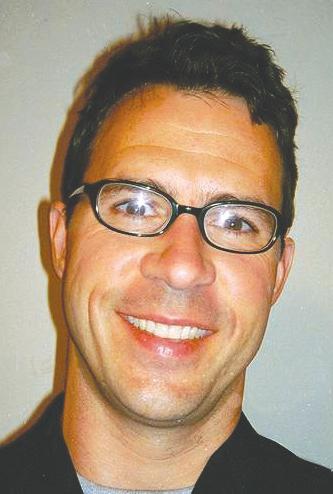
Writers & Contributors
Deborah J. Sergeant
Mary Beth Roach, Christopher Malone
Ken Sturtz, Charles Ellis
Carol Radin, David Figura
Margaret McCormick
Columnists
Bruce Frassinelli, Marilyn Pinsky, Harold Miller
Jim Sollecito, Marvin Druger
Michelle Reed, Jim Miller
Eva Briggs (MD)
Advertising
Amy Gagliano
Pamela Roe
Office Manager
Loni Zardus
Layout & Design
Angel Campos-Toro
Cover Photo
Chuck Wainwright
With more than 20 years of experience in the financial services industry, I began thinking about my family’s philanthropic plan early on. It was important to me that we effectively incorporated charitable giving into our overall financial picture.
Building a financial plan is like putting together a puzzle and charitable giving is an important piece. We set up a donor-advised fund at the Community Foundation because it is a smart way to give. We can make an impact on Central New York now while having our charitable wishes continue for generations.
I enjoy engaging my sons in the current giving from our fund to organizations that support youth and outdoor revitalization. Our fund will receive a legacy gift with a contribution from my retirement investment accounts when I pass away. I am comforted knowing that my sons will carry forward our love for this community through our charitable legacy for years to come.

Read more of Caragh’s story at cnycf.org/fahy
Caragh Fahy stands with her sons at Onondaga Lake Parkcaffeinated, and just loving the kind of work I was fortunate to do each and every day, rain or shine. But I never forgot my roots, or my first 1966 threequarter-ton Chevy truck. It was a rusty vehicle; we called it a 60-footer, because it looked OK from about 60 feet away. And so began my lifelong investment of constantly upgrading vehicles, tools and techniques. Staff came and went, but my very first landscape supervisor is still with me. After all of these years, can you imagine that? Horticulture can be a very satisfying career as well as summer job.
I never wanted to plow snow in the winter. Driving night time roads in the worst weather was just not appealing. Instead, I have used the off seasons for education, traveling to places where I can learn how things are done differently. Going off script, interesting adventures on land and sea are along the way. I am not so concerned with the length of my life as I am with the depth and width. Traveling 39 countries, I’ve brought back nuggets from each that made me a better business or better person. And I am not done yet.
When I first started in business, I was young and poor. But after five decades of hard work and dedication, I can truthfully report I am no longer young. If you aren’t making mistakes, then you aren’t living life. The trick is to learn from them. Education is an ongoing process. Our future: learning, growing, progressing.
Fifty years ago, immediately following my freshman year of college, I accidentally started Sollecito Landscaping Nursery.
You might recall in 1973 there was a recession happening and jobs were very hard to get. I was running the landscape crews for a company that suddenly closed up shop.
Since I was putting myself through Cornell University as an ornamental horticulture student, unemployment was not really an option. At the very moment I was told my job was eliminated, I brazenly asked the owner of The Plant Man what he wanted for all of his tools. He said to make him
an offer. I did. He accepted. Less than three minutes from being told I was no longer needed, I started my own business. And ever since then, this is where I have been needed and where I needed to be.
I knew the customer base. They trusted me. And since I had trained the crews myself, I just hired them right then and there, on the spot, to work for me. If I had not been so decisive, that opportunity would have quickly disappeared and who knows what I might have done otherwise. Some events just cause us to grow up fast.
Isn’t life like that?
Highly motivated, functionally
You may wonder how much is all that experience worth? The correct answer is, of course, a lot. So, this spring when you want to enhance or improve your landscape, give us a call and see what the possibilities might be. After all, starting our 50th year in our family business, it’s still about having the best plants and positioning them correctly in exactly the right places. And that, my friends, is priceless.

Jim Sollecito is the first lifetime senior certified landscape professional in New York State. He operates Sollecito Landscaping Nursery in Syracuse. Contact him at 315-468-1142 or jim@sollecito.com.
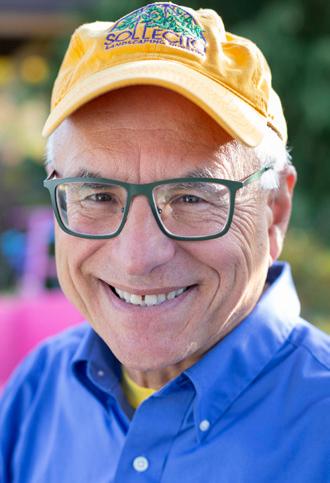
Q.: When is the best time of year to apply for Social Security benefits? A.: You can apply as early as four months before when you want your monthly benefits to begin. To apply, just go to www.ssa. gov/applytoretire. Applying online for retirement benefits from the convenience of your home or office is secure and can take as little as 15 minutes. It’s so easy!
Q.: Will my retirement benefits increase if I wait and retire after my full retirement age?



A.: Yes. You can increase your Social Security retirement benefit in two ways:
• You can increase your retirement benefit by a certain percentage if you delay receiving retirement benefits. We will add these increases automatically from the time you reach full retirement age until you start receiving benefits or reach age 70.
• If you work, each additional year you work adds another year of earnings to your Social Security record. Higher lifetime earnings may result in higher benefits when you do retire.
For more information, visit www.ssa. gov/pubs to read, print, or listen to our publication, “When to Start Receiving Retirement Benefits.“ You also can use the retirement estimator at www.ssa.gov.
Q.: What is the earliest age that I can receive Social Security disability benefits?

























A.: There is no minimum age as long as you meet the Social Security definition of disabled and you have sufficient work to qualify for benefits. To qualify for disability benefits, you must have worked under Social Security long enough to earn the required number of work credits and some of the work must be recent. You can earn up to a maximum of four work credits each year. The number of work credits you need for disability benefits depends on the age you become disabled. For example, if you are under age 24, you may qualify with as little as six credits of coverage. But people disabled at age 31 or older generally need between 20 and 40 credits to qualify, and some of the work must have been recent. For example, you may need to have worked five out of the past 10 years. Learn more at www.ssa.gov/ disability.

Aside from a mighty quadruped with a black coat, the term “dark horse” refers to a person, a group or something which may not be at the forefront at their profession or in its niche but has a great potential of success.
Although this may not have been the intention when Dark Horse Tavern opened in 2003, its 20-year longevity does say a heckuva lot. Plus, to note, it’s corralled in a small plaza; blink and you may miss it.
The restaurant aesthetically lives up to its niche for many reasons. Cue a darkened atmosphere and dim lighting. The restaurant itself is on the smaller side, with a narrow path to get from the door, past the bar, and to a seat. It feels very prohibition-esque, or at least what I think it would feel like. During daylight hours, the brightness
makes the path seem wider.
After an afternoon at the YMCA, lunch was a family affair. The staff was helpful and accommodating when it came to helping us situate our infant’s car seat.
They were also unintentionally helpful in another regard. As it was teetering around naptime, save the great exercise of being in the pool, our more-and-more-vocal kiddo quieted down when restaurant staff walked by, giving her attention or not.
They were equally attentive to us adults, from when we ordered a beer ($7) and appetizers to our sandwiches. Extra kudos is given to our server Brian.
Patrons are given complimentary bread and a dipping dish with parmesan cheese and seasonings. Bottles of olive oil are at each table,
so add as much as you prefer before enjoying this palate teaser.
How many times have you looked at a nachos option ($14) and made the decision to not get them? Yet, there was reluctance with the conclusion drawn, which is validated when the dish of chips and pico de gallo smothered in cheese, ranch, and sriracha. Ah, let’s not forget the jalepeños, either.
The nachos did not disappoint aesthetically and the taste lived up to the visual hype. The house-made nacho cheese sauce was a spot-on replication of the boxed or bagged sauce you’d find on the nachos at any ballgame.
Although it did boast bright and crisp jalepeño slices and sriracha sauce, the spiciness wasn’t over the top. Then again, I’ve expressed my tolerance to food and sauces with a kick. My wife agrees it was a perfect amount.
The short rib grilled cheese ($16) combined the best of both worlds with a childhood and an adult favorite. Between two large slices of brioche bread sat tender short rib and caramelized onion held together with provolone cheese.
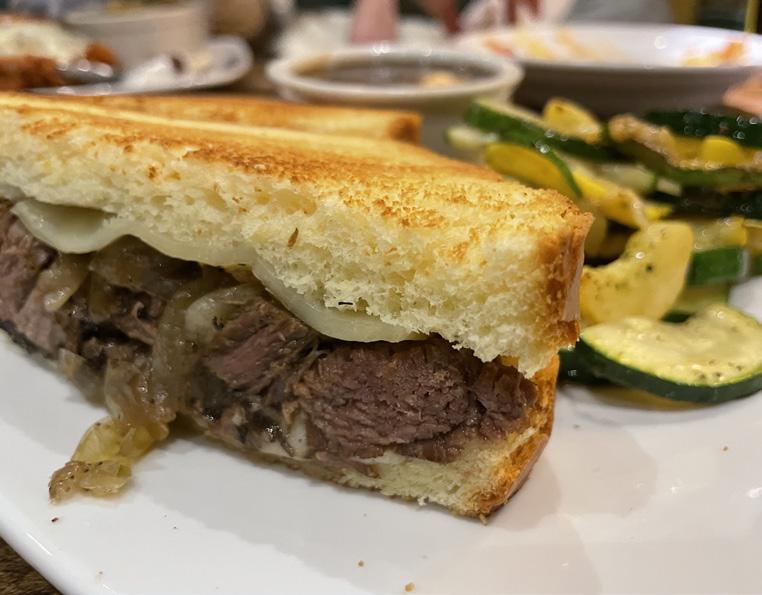
It came with a side of Dark Horse’s demi-glace — a rich, dark, semi-salty, medium-thick sauce. The generous cup
 The short rib grilled cheese ($16).
The short rib grilled cheese ($16).
of the sauce made it easy to dip and dip and dip — yes, gladly following suit and double-upping George Costanza for all you Seinfeld fans — until there was no other option except pushing the last bit of sandwich into the container to get whatever remnants were left.

Instead of opting for fries, we went with sautéed vegetables for no upcharge. What we got was yellow and green zucchini. The bright, crisp squash relatives were not overly seasoned, oily or mushy.
At the Dark Horse Tavern, you can get what’s called a “daily double” — a sandwich and soup combo ($14). The specials caught our eyes, so we couldn’t say no.
The shareable bowl of soup du jour was cream of cauliflower with Brussels sprouts. The thick, white soup boasted large florets of cauliflower and large sprouts, plus pieces of bacon floating about.

The sandwich special was also noteworthy. Shredded buffalo chicken topped with cheddar sat between a nice fluffy roll. The chicken, and short rib for this matter, was not dry. The chicken and beef were not only cooked well, they tasted fresh.

Before tip, the bill came to $55 and change.
Dark Horse serves up a great meal and experience. Sadly, I’m embarrassed to say it was only second time there, coming years after my first time. I look forward to enjoying another meal there soon, but hopefully there won’t be as long of a gap.
4312 E Genesee St
Syracuse, NY 13214
Restaurant: (315) 446-31800

darkhorsetaverndewitt.com
instagram.com
darkhorsetaverndewitt
Sun. & Mon.: Closed
Tues. & Wed.: 4 – 9 p.m.
Thurs.: 11:30 a.m. – 9:30 p.m.
Fri. & Sat.: 11:30 a.m. – 10 p.m.
TOP: Dark Horse Tavern’s nachos did not disappoint aesthetically and the taste lived up to the visual hype. MIDDLE: Shredded buffalo chicken topped with cheddar sat between a nice fluffy roll. BOTTOM: Shareable bowl of soup du jour: cream of cauliflower with Brussels sprouts.Number of older adults in CNY grows faster than most cities in New York state. In Syracuse, the 65-plus population increased from 15,971 to 22,805 in 10 years
By Deborah Jeanne SergeantCNY is going gray—and faster than the rest of New York, according to a study from the Center for an Urban Future released in January.
The number of people 65-plus increased by 43% in Syracuse in the past 10 years. That’s the third-highest increase of any major city or county in the state. Rochester (64%) and Saratoga County (50%) were in first place for the increase in 65-plussers.
Between 2011 and 2021, Syracuse’s 65-plus population increased from 15,971 to 22,805, a bump of 6,800. The senior population in the city swelled from 11% to 15.6% during that time
span. Most of those were people between 65 and 84.
The percentage of people 85 and older declined by 26% during that decade, possibly in part because of COVID-19. The state’s life expectancy declined early in the pandemic, dipping from 80.7 in 2019 to 77.7 in 2020, which indicates it was likely a statistical effect because of coronavirus. Despite this decrease in lifespan, the 85-plus group grew by 3% from 2011 to 2021, fast than the 1.8% growth in population.

Another factor that has skewed the population of Syracuse to an older one is the downturn in younger people. The number of those younger than 65
dropped by 5%, accounting for 6,000 people. Those factors combined mean that the Salt City’s population is older than it used to be.
One reason for fewer younger people in New York is the mass exodus from New York.
In 2021, more people moved out of New York (63.1%) than into it (36.9%), according to a report released by United Van Lines. New York had the third-highest rate of people leaving, surpassed only by New Jersey (70.5%) and Illinois (67.2%). The trend continues from 2020 (66.9%), 2019 (63.1%), 2018 (61.5%), 2017 (60.6%), 2016 (62.8%), 2015 (64.7%), and, the earliest year for which data is available, 2014 (64.1%). This data does not include people using other moving services or moving themselves.
The most recent United Van Lines study stated that the reasons for leaving New York included family (29.4%) and, for those with multiple reasons, reasons included retirement (28.95%); work (25.72%); lifestyle (24.28%); cost (11.69%); and health (7.02%).
The reason affecting older adults the most—retirement—is comparable to the one affecting younger adults, work, indicating that the declining
Our united exper tise brings you advanced technology and streamlined care. As par t of the Upstate Cardiovascular Group, we provide connec tions to research and surgical care.
TO GROW.
P H YS I C I A N S
F RO M TO P L E F T:
Dana C. Aiello, MD


Larr y S Charlamb, MD
Mark J Charlamb, MD
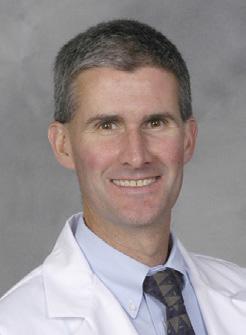
Christopher A. Nardone, MD




Michael Fischi, MD
Charles Perla, MD
Theresa Waters, DO
Andrew M Weinberg, DO

Timothy D. Ford, MD
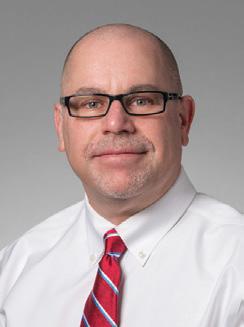
Rober t L Carhar t, Jr , MD
Debanik Chaudhuri, MD
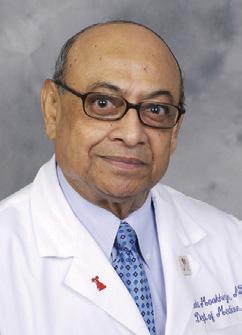

Hani Kozman, MD


Sakti Pada Mook herjee, MD
Amy Tucker, MD
Daniel Villarreal, MD

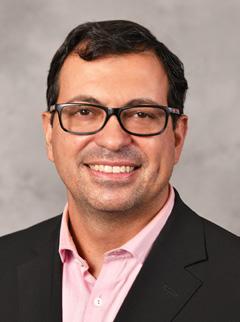
population is not primarily driven by retirees moving to warmer climes. The exodus from New York doesn’t correlate with other northeastern states with equally cold climates. None of the New England states but Rhode Island have experienced more moving out than moving in.
Onondaga County has seen an increase in older adults correlating with Syracuse’s uptick: 29% in the past 10 years, accounting for 19,000 people totaling 85,000.
The swift increase of older adults in Syracuse and Onondaga County mirrors that of the state. A decade earlier, 14% of New Yorkers were 65plus. As of 2021, that has surged to 18% while those under 65 decreased by 2.6%, totaling almost 3.5 million, a figure larger than the entire population of 21 states.
Typically, older adults need more community resources for healthcare and support in activities of daily living than younger people. That is particularly true for those with limited financial resources. The Center for an Urban Future report revealed that 21.6% of older adults live in poverty in Syracuse, trailing only the Bronx (25%) and Rochester (21.7%). Across New York, the rate of poverty among 65-plussers increased by 37.4%
between 2011 and 2021, undoing years of declines in senior poverty rates. This may be in part explained as a statistical anomaly, as in recent years, those financially able to move out of state have left behind more older adults who lack the means.
Supporting older adults as their needs increases includes several strategies, such as providing more funding for non profits serving older adults; developing more options for affordable housing; and cultivating strategies to address social needs including transportation, food and medical care access, elder abuse and mental health issues.
JoAnne Spoto Decker, commissioner of the Onondaga County Department of Adult & Long Term Care Services (DALTCS), said that her department has been aware of the growth of the number of older adults Onondaga County.
“The core programming offered through DALTCS currently addresses the graying trend: caregiver services, assistance with HEAP and other income stretching programs such as SNAP and the Medicare Savings Program,” Decker said. “Expanded inhome services for the elderly addresses homecare and respite for those over the age of 60 years and who do not
participate in the Medicaid program.
Nutrition services oversees more than 25 senior dining sites located throughout the county, in addition to their expansive home delivered meals program and nutrition counseling. Complimenting nutrition services is a series of evidence-based health promotion programming designed to support the aging process.”
Other programs include chronic disease self-management, peer support for adults with Type 2 diabetes, chronic pain self-management, walk with ease and tai chi for arthritis.
Decker added that the NY Connects program offers options counseling to those seeking information and assistance on long-term care services and supports for people of any age.
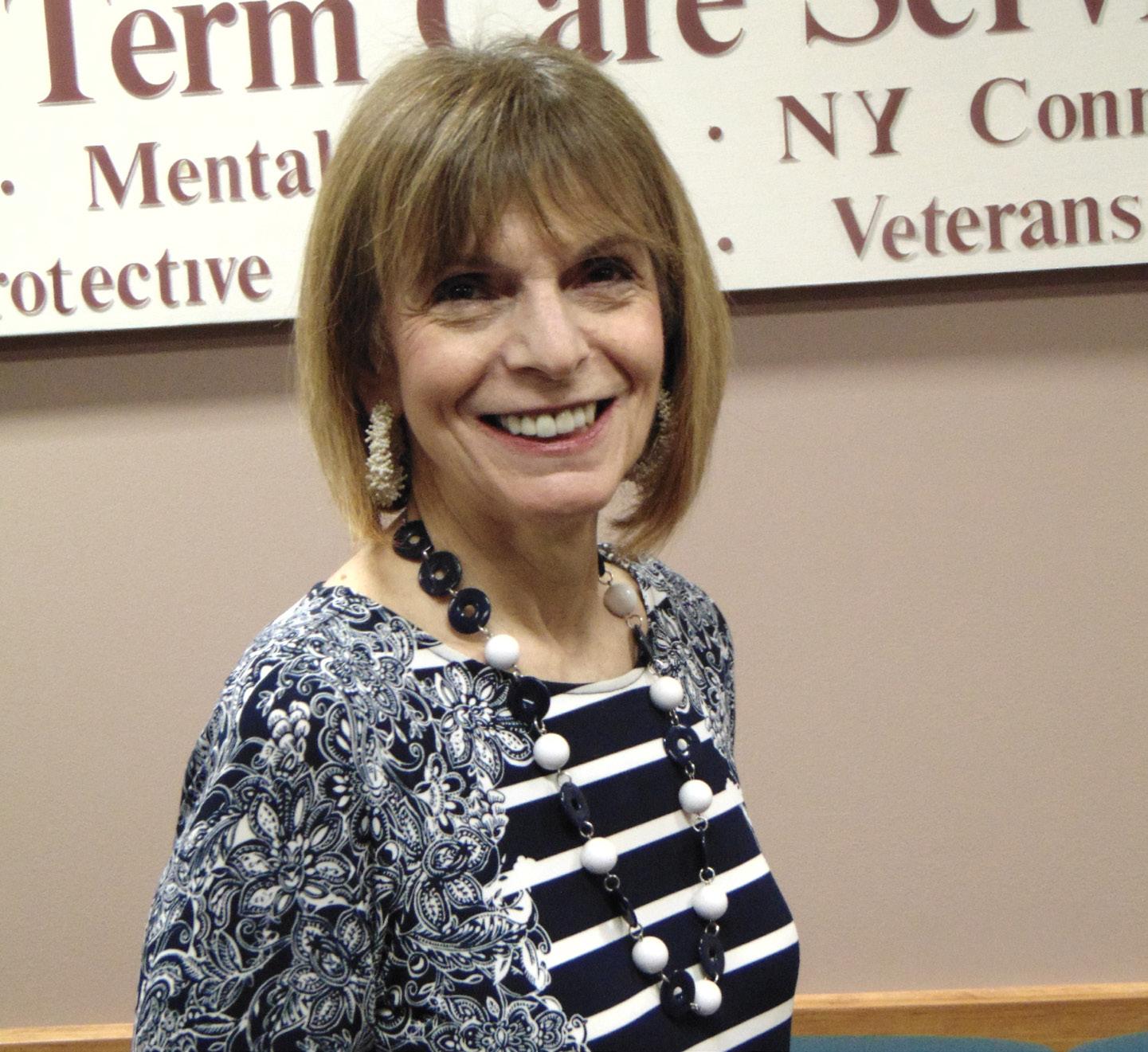
“Adult Protective Services (APS), available to persons age 18 and older, involves intake, investigation and assessment of referrals of abuse, neglect and financial exploitation of impaired vulnerable adults who live in the community,” Decker said. “APS caseworkers develop service plans for eligible clients to remedy abuse or to address their unmet essential needs.”
DALTCS’ Senior Health And Resource Partnership Project (SHARP) provides to adults 60 and older counseling and community-based services that promote physical and emotional wellbeing. These include care facilitation, aging assessments and services, mental health referrals and substance use counseling referrals.
During the pandemic, resources like senior centers closed or shifted to virtual formats. Many of these have restarted meeting in person or continue with virtual programming to address isolation.
DALTCS is also piloting ElliQ, a proactive, voice-operated care companion to foster senior independence and promote wellbeing.
Decker is not certain the “gray shift” will stay that way in CNY considering Micron’s coming $100 billion investment in the community, as potentially tens of thousands of new families will move to the area to fill the company’s new positions.
“Seniors will continue to be a vital part of our community and the Department of Adult & Long Term Care Services and Onondaga County government will continue to focus on supporting their needs now and always,” Decker said.
Caring
someone

The Alzheimer’s Association® offers round-the-clock support a Alzheimer’s disease and other dementias.
Free 24/7 Helpline: 800.272.3900

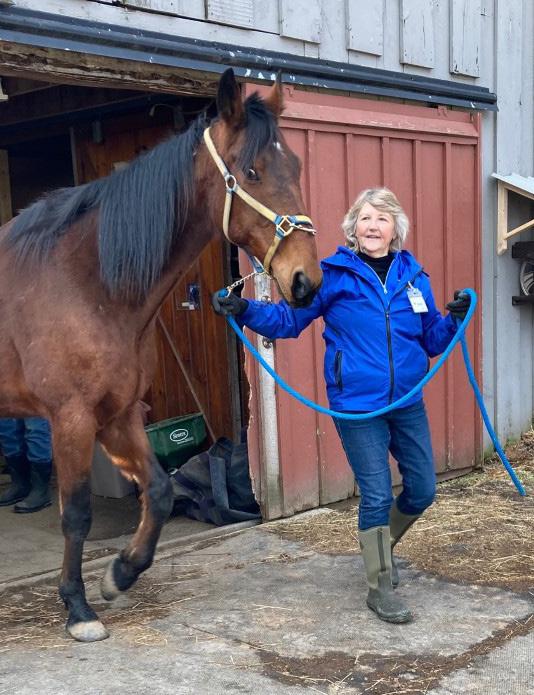
Sunshine Horses in Clay has adopted over 250 horses since its inception in 2003. Volunteers work seven days a week to rehabilitate and retrain them
By Mary Beth RoachJust as dawn begins to break, volunteers arrive at the nonprofit Sunshine Horses facility in Clay, having traveled from various points across Onondaga County, to tend to the 24 horses stabled there.
They are part of a corps of people who take care of these animals, which are retired Standardbred harnessracing horses and rescues that come to the barn on Verplank Road to be rehabilitated or retrained for different equestrian principles.
Since starting in 2003, Sunshine Horses Inc. has adopted out more than 250 horses. The 501 (c) (3) organization turns 20 this year.
On one particular day, 13 women, all 55 or better, came in about 7 a.m., ready to feed the animals, make sure they got their meds, take them out to the pastures to get some exercise, muck their stalls and more. Most of them wrap up their duties by 11:30 a.m.
Another crew of volunteers comes
in in the afternoon to bring in those horses that are out in the pasture, feed and groom them. Most volunteers will work one shift a week, although some opt to come several times a week. This schedule goes on seven days a week, 52 weeks a year, even on holidays.
In addition to their tasks, volunteers also assist in schooling the horses, helping them get used to saddles and people, since so many have come from the field of harnessracing. The volunteers receive a good deal of training at the onset, and they are paired with mentors who teach them the ropes. They also offer clinics and have guest speakers. There’s a separate group of volunteers who take on various maintenance responsibilities.
Although these early-morning hours might be a daunting commitment for some, the women on this one morning were all smiles, joking with each other and, of course, taking care
of the horses.
This group of women joined Sunshine Horses for different reasons, but the common thread is their love of horses.

Dianne Sestak, 61, has been part of the group for about 11 years. She became an empty-nester at 50 years of age and had a cancer diagnosis. “It was one of those things that make you think,” she said.
A Texas native and current Bridgeport resident, she had always loved horses, so when she heard about Sunshine Horses, she checked it out. “Life’s too short. You have to do what you want to do. It was something that just needed to happen for me. It changed my world,” Sestak said.
Mona Hamblin, 60, of Cicero, joined Sunshine Horses recently because she wanted to do “something outside my comfort zone.” She refers to herself as the newbie, but yet has already found benefits from
Volunteering at Sunshine Horses — bottom row from left: Dianne Sestak, Marisa Jones, Patty Wolf, Robin Young and Charlotte Garofalo. Standing, from left: Sue Churchill, Bobbi Baker, Mona Hamlin, Chris Rowland, Anna Renfrew, Dawn Ellis, Janet McGraw and Karen Marcely. Not pictured but also part of Wednesday’s group is Ginny Quinn. The horse is Ollie, a 22-year-old standardbred gelding. Opposite page: Volunteer Anna Renfrew of Clay has been working at Sunshine Horses since 2015.her involvement, appreciating the relationship with the volunteers and the horses.
“It gives back 100%,” she said.
When Anna Renfrew retired a few years ago, she said her plan was to take care of her elderly parents. However, they both died within a year. She recalled thinking, “Now what I am going to do with myself?”
She wanted to stay busy and looked at different possibilities. She, too, always loved horses, and when she learned of the organization, she decided to give it a try. “Once I did, I loved it,” she said.
A volunteer at Sunshine Horses since 2015, the 72-year-old Clay resident noted that the experience has allowed her to make new friends and stay “farm fit.”


A one-time schoolteacher, Chris Rowland, 64, of Liverpool, had no retirement plans. Now, she’s not only a volunteer, she’s a horse owner, having adopted one of the Sunshine horses. She had come across the place while out visiting garage sales one day. She
said she had wanted a horse since she was a child, so she inquired about the need of volunteers. She was at an orientation the following week.
“Just being around the horses has been such a blessing,” she said, further explaining that the connection one makes with the animal is so endearing.
These volunteers’ comments underscore the sign in the Sunshine Horses barn — “Helping Horses. Helping People.”
Sunshine Horses Inc. is 100% volunteer-driven and of the approximate 300 volunteers, about half of them tend the horses, while others take on fundraising and event duties. It is funded solely by funds and donations, according to its website.
Sunshine Farms, founded in 2003 at the New York State Fairgrounds, celebrates its 20th year this year. After moving a few times in the past, it is now located at 3721 Verplank Road in Clay.
One of the major fundraising events for Sunshine Horses is the Kentucky Derby Gala on May 6. Other events include a garage sale on May 19 and 20; the Strawberry Shortcake Run and open house on June 17; the annual tack sale on July 21 and 22; and the Uptown Hoedown in October, on a date to be determined.
Those wishing to support this 501 (c) (3) organization can help in its capital campaign, volunteer, sponsor a horse, provide funding for the veterinarian fund, or attend one or more of the group’s events.
For more information, visit www.sunshinefarms.org.



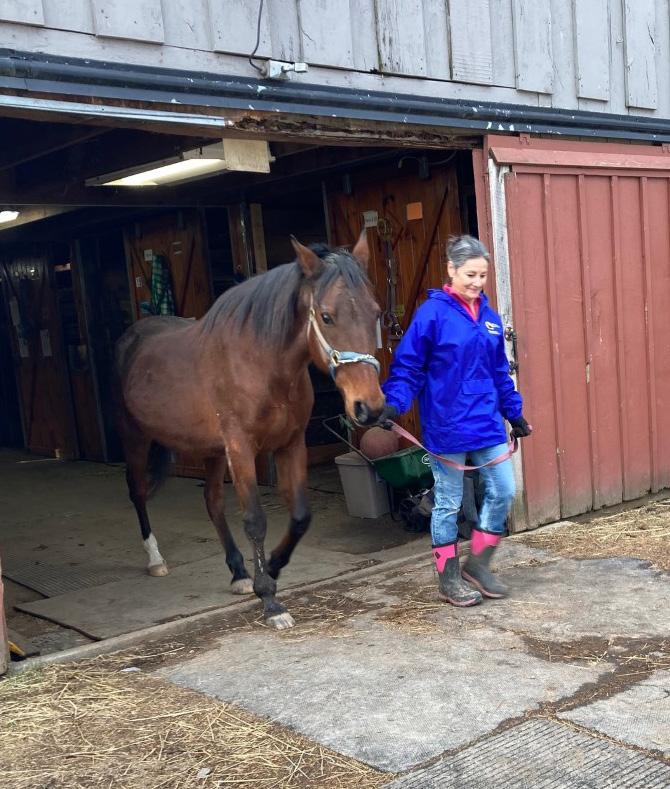 Volunteer Marisa Jones
Volunteer Robin Young
Volunteer Marisa Jones
Volunteer Robin Young
How will the next generation of 55-plussers change the demographic’s approach to finances?
By Deborah Jeanne SergeantWhile the baby boomers and millennials have been duking it out on social media as to who ruined what, the generation in between, generation X, has been quietly growing older.
Depending on the generational cut-off, the oldest gen-Xers are between 55 and 57.
How will the next generation of 55-plussers change the demographic’s approach to finances?
“The core values of people that identify as a Gen-Xer include diversity, self-reliance, practicality, informality, a work life, balance, flexibility and technology,” said Rita Worlock, licensed clinical social worker in private practice in Liverpool. “Unlike
past 55-plus generations, Gen-Xers give their best when their responsibilities in the workplace align with their values. Their performance suffers when their values are ignored as they seek validity to promote that work life balance.”
They often use technology to help increase leisure time, such as automating as much as possible. Their tech savviness can make a big difference in their finances.
“Midlife people right now use technology more frequently and shop online much more than their parents did and do,” said Randy L. Zeigler, certified financial planner and private wealth adviser with Ameriprise Financial in Oswego.
Using tech to manage finances can make it easier, such as online banking,
automatic bill paying and remote deposit. But it can also mean spending more online. The ease of ordering the deliver of food and goods can make money vanish quickly.
The thrifty baby boomers — brought up hearing about the Great Depression from their parents or grandparents — have prized thrift and eschewed debt. Growing up in the glitz of the 1970s and ‘80s may have skewed Gen X in a different direction, with less emphasis on saving and investing.
Gen X members “probably do less budgeting of expenses versus earlier generations,” Zeigler said. “When I am preparing a financial plan for clients, the greatest challenge is getting them to accurately prepare a cashflow worksheet for me that clearly

represents how they spend money and how much they need to support their current lifestyle versus the lifestyle they wish to support during their retirement years.”
He thinks this may reflect lack of concern about long-term finances. He also sees many Gen Xers who are unaware of their annual income. Fewer have a defined benefit pension than baby boomers or silent generation members.
“There is much greater onus on the midlife folks to accumulate their retirement capital,” Zeigler said. “Some realize this fact and are saving and investing well; others do not.”
The demands on Gen X finances affects their ability to squirrel away funds into a retirement fund. Gen X has become a “sandwich generation,” caring for their own children while helping their aging parents. This puts additional financial strain on a generation that likely has not been as frugal as baby boomers.
“Gen Xers are less likely to have any retirement plan than their parents did at the same age,” Worlock said. “Frankly, Gen-Xers could actually learn more from Millennials when it comes to saving for retirement. GenXers tend to be pessimistic as they don’t feel confident that they will be able to retire.

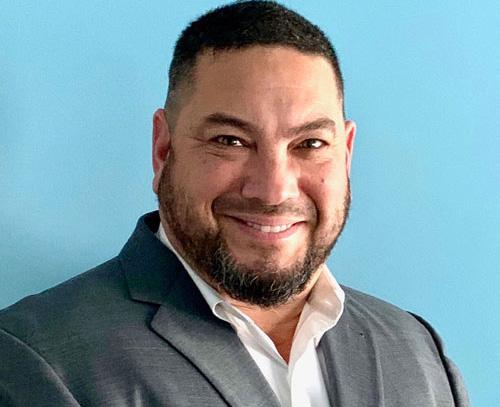
The Gen-Xer tends to be pessimistic about finances as well because with work, family and life commitments colliding, they are acutely concerned about living a longer and more financially fruitful life.”
The costs of education and healthcare have risen exponentially. The US Bureau of Labor Statistics states that prices for college tuition and fees are 1,461.32% higher in 2022 versus 1977. The bureau also states that the prices for medical care services have grown by 7,123.08% from 1935 to 2022. The buying power of a dollar is only 18.127% of what it was in 1975. To make times even tougher, Gen X faces a retirement of hardship.

At this point, Gen-Xers should strive to improve their financial status by eliminating debt, especially credit card debt. Starting early on retirement planning is ideal. However, starting at any age is better than not starting at all. Working with a financial adviser can help create a plan for retirement that makes sense with the person’s obligations, income and goals.

The new thinking is that parents should be accommodating young adults to live at home as long as possible — is it a good idea?
When my children had finished college back in the 1980s, my goal was to get them out of the house and into a responsible job as soon as possible.
Of course, I love my children, but I could not imagine any of my three boys sponging off their parents until they were 30 or older.
I am happy to say that my two older sons found jobs right out of college; my youngest went to medical school, so he didn’t start his fiveyear surgery residency until he was 27.
The conventional advice for me and other parents my age was to cut the financial relationship with our young adult children as soon as we could. Do we push them out — a sink-or-swim scenario — or do we keep them until they are able to take on financial responsibilities for themselves?
If we didn’t do that, we were viewed to be irresponsible, coddling adults who would regret allowing them to be on the family dole indefinitely. After all, who wanted to raise 20-something sloths closeted in their childhood bedroom watching TV or doing other activities that resulted in frittering away the days that turn into months, possibly even years?
Sorry, but now I am told that this is outdated thinking, even callous in the face of the fallout from the COVID-19 pandemic. I am told that giving a helping hand to adult children doesn’t mean that you are stifling their path to
independence. Our kids now face monthly rent payments that can be more than 50% of their take-home pay. Inflation is causing food prices to surge. Energy costs have risen significantly during the past year. If your children need to buy a vehicle, even an older model, it costs a bundle.
The new thinking is that parents should be accommodating young adults to live at home as long as possible, especially if they need to pay off large student loans. Even if they don’t have major debts, a few years of being rent-free can help them tremendously when they finally go it alone, we are now being told.
In another era, I was out of the house and on my own at age 22 when I graduated from college and landed a teaching job that paid $4,000 a year in 1961. I also had a part-time job at a radio station in the same community. But I really lucked out: I boarded with an elderly couple at whose home I had an upstairs bedroom and kitchen
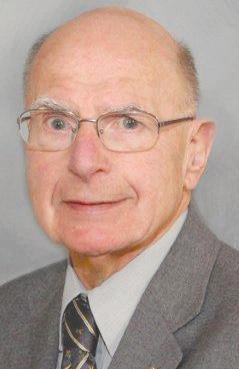

privileges, all for $1 a day. At another home, a couple with whom I became good friends, allowed me to have supper with them each night, also for $1 a day. So I paid $14 a week for room and board. When I tell this and other stories from my youth to my grandchildren, who are just now making their way in the world, they roll their eyes and remind me that deals like this are no longer available except in fairy tales.
All of my five grandchildren, ranging in age from 20 to 27 are still being subsidized to varying degrees by their parents. One is still in college, one has a good job but still lives at home; another, who also is living at home after quitting a full-time job without another job to go to, just got an offer that she is considering. One lives with her fiancé, and the other is an ensign in the U.S. Navy stationed on the West Coast.
A big variant in this different generation of kids has been the COVID-19 pandemic. So many younger workers lost their jobs when there were massive layoffs — victims of first in, first out. Now, that jobs are plentiful again, at least they were before some of the high-tech layoffs of late, younger workers have more choices than previously.
A report from savings.com indicated that many young adults who were blindsided by the pandemic turned to a reliable safety net — their parents. From buying food to paying for their cell phone plan or covering health and auto insurance, half of parents with children over 18 provide them with at least some financial
support. According to savings.com, these contributions to their kids amount, on average, to about $1,000 a month.
These children even have their own name now — they are called “boomerang kids,” because they return to the nest or require financial help to stay afloat.
I was curious as to whether some of these young adults, especially those who might have part- or full-time jobs, are contributing to household expenses while living with their parents, but savings.com in its survey found that two out of three do not.
For parents who are in their key earnings years, supporting grown children can threaten their own financial security, but most parents take the position that “my kids need me, and they come first,” even if it means that parents do without.
Financial experts caution, however, that when you lay out large amounts of cash to help your adult children, it deprives you of the funds that you are saving to reach your financial goals, such as paying off debt, building a nest egg for retirement and salting away money for long-term health-care costs. This could be the equivalent of robbing Peter to pay Paul. These experts advise that you should take care of yourself first, then help your adult children, who have to be able to fend for themselves, even if it is a bit painful at the beginning.
More and more grandparents, especially those who are in a position to do so, are coming to the rescue by either subsidizing their children or their grandchildren to get them over the financial hump.

I thought the advice of former educator Jenny Grant Rankin, who has written on the subject, was perfect: “The key is to be helpful but not to enable poor behavior.”
Your financial helpfulness cannot be an open checkbook. There must be expectations on the part of your children or grandchildren, and they need to be articulated so everyone is on the same page.
Here is the bottom line: Parents and grandparents might think that they are doing their children and grandchildren a big favor by continuing to support them as adults, but, in reality, the best gift they can give is personal responsibility and the will to let them make it on their own.

McGregor’s
the gritty,
issues that parents of estranged children face.

In a gentle yet authoritative tone, and with exercises derived from her work as a life coach and her own estrangement, Sheri McGregor, M.A., helps parents come to terms with their adult child’s choices, and regain their health and happiness.


 by Sheri McGregor, M.A.
by Sheri McGregor, M.A.
OPPOSITE PAGE: Deb Meyer, the Everson Museum of Arts’ docent president, with one of her favorite pieces in the ceramics hall, a terra cotta Ayyanar Horse created by potter-priest Muthukaruppan Palaniappan of southern India.
THIS PAGE: An excited group of children on tour in the Everson Museum of Art. In the fall of 2022, the Everson Museum of Art and its busy docents hosted 1300 schoolchildren.

What to think when staring at a three-foot high sculpture of sharp ceramic webs and cloud-like shapes punctuated by spikes of common appliance parts? Mysterious — until docent Ellen Hardy points to the structure’s center and peers inside.

“There’s actually a heart inside there. Do you see it?” Then she straightens and sweeps one arm outward toward the gallery’s expanse of sculptures by Raymon Elozua. “Each one has a heart in the center,” she said and suddenly we are intrigued and engaged.
Hardy, 76, has been a docent, or tour guide, for the Everson Museum of Art in Syracuse for 14 years. She volunteers about 25 hours a month. A retired vice principal in the North Syracuse School District whose teaching discipline was French, she applied when the museum was looking for someone who could lead tours in French during the French Impressionism Artists’ exhibition in 2008.

“I like that I can stay in touch with
teaching,” Hardy said. “It is lifelong learning.”
The same could be said for Henry Zucker, 80, a volunteer guide at Syracuse’s Erie Canal Museum. The retired librarian from Rome loves facts and knows a lot of them. The museum building itself?
“The Weighlock Building—circa 1850—was nothing but a tollbooth!” The barrels?—They carried Lake Erie water to the Hudson River water for a ceremonial blending called the “Wedding of the Waters.” He will even quote classic American writers Herman Melville and Nathaniel Hawthorne, who wrote of their experiences on the canal packet boats back in the 1800s.
Many retirees make up the volunteer docent groups in both the Everson Museum of Art and the Erie Canal Museum. It is an enriching relationship for all concerned. The museum staff and the volunteers learn much from each other, and they pass on a quality experience to museum visitors and to the Syracuse
community itself.
While Hardy and Zucker both have backgrounds in education, that is not required nor is it particularly common among other docents.
Said Derrick Pratt, the Erie Canal Museum’s director of education and public programs, “We have retired librarians, teachers, police officers, grocer distributors, pilots, insurance adjusters and nutritionists to name a few. I’ve learned quite a bit from our volunteers over the years, especially since they come from a wide variety of backgrounds.”
Retired nutritionist and dietitian Dorothy Hares, 73, for instance, is a Canal Museum tour guide who has drawn on her professional background for one of her learning activities. As a tie-in to the kinds of food that were transported in canal barges, Hares arranged for the curator of the food exhibit to give a presentation to members of the local dietetic organization about the foods that native peoples in 19th century New York were growing and how those foods evolved to become part of our current diet.
How does a nutritionist decide to guide tours in a museum about New York State history? Again, the yen for life-long learning.
Through the docent training and in-service opportunities, Hares has immersed herself in local history.
“I’ve had a chance to read documents from the 1850s. I’ve worked with another docent who’s been examining maps, and to see that amount of detail—like Oneida Lake— you get a sense of how people then were seeing the lake.”
Hares, a Baldwinsville resident, has also become acquainted with surviving relics of the Erie Canal when doing walking tours through Syracuse’s downtown Clinton Square.
“Why is that door there? On the second floor, on the outside of the building?” she might ask, directing visitors to look up at the brick Phoenix building. If they can’t guess, she tells them that it is to accommodate the height of the freight barges and the unloading of cargo.
The Erie Canal Museum currently has 15 tour guides. Even Pratt’s mother, Carol Pratt, 67, has joined the ranks. Derrick Pratt, who has a degree in social studies and was a former director of programs for the Chittenango Landing Museum, does the orientation and training over two days. New tour guides get a thorough background on the museum and the canal itself, as well as a script for each
display—scripts which guides like Zucker and Hares enhance with their own ideas, of course. On their first tours, guides are accompanied by an experienced tour guide.
The Everson Museum of Art also has a formal training program for docents.

Shari Merten, the learning and engagement coordinator, coordinates the museum’s recruiting, training, and in-service opportunities. Merten, whose degree is in museum studies, with an emphasis on education and media studies, has implemented a number of ideas and projects to keep the docents energized. Initially, she likes to focus on visual thinking strategies. In essence, the docent engages observers by “asking what you see and explaining why you think that, to think deeply about how we perceive things.”
The docents take a three-day workshop and do their first several tours with an experienced docent. Ultimately, Merten appreciates that “Everyone brings a different skill set.”
So her intention is just as much to “leave it open” for docents to follow their personal approaches to tours.
With Merten’s support, several docents also choose to take learning activities out to the Syracuse
community. Ellen Hardy has facilitated learning activities at such places as Hazard Branch Library on Syracuse’s west side, the Veterans’ Administration Hospital, and RISE, the Center for Refugee and Immigrant Self-Empowerment in Syracuse. Hardy recalls a wonderful school activity in which she and the students made clay necklaces as a way of connecting to Syracuse artist Sharif Bey’s “Facets” exhibition of African-American ceramics and sculpture in 2022.
Hardy and the other docents see many school groups, particularly in the fall when the Everson invites all fifth graders in the Syracuse School District for tours. October 2022, the museum hosted a total of 1,300 school students.
“The kids are like sponges!” Hardy exclaimed, all smiles.
Another Everson docent, Deb Meyer, 74, has taken docent involvement to yet another level. In her role as the Everson’s president of the docents, she became the regional director for New York, New Jersey and Delaware in the National Docent Symposium Council.
In a national conference in Washington, D.C. in 2019, eight Everson docents drew on their professional skills and their volunteer experiences and presented two break-out sessions, one on outreach activities and one entitled, “Curating a Website for the Non-digital Docent.”
Meyer also works with the Everson’s director of learning and engagement, Adam Carlin, in recruiting and training docents and in inter-staff communication. Yet it is clear that, as she wanders the museum’s famous ceramics collection, from vessel to vase to life-size statuary, it is the art — and how to bring that to others — that is uppermost in her heart. Meyer, a former teacher and administrator for the Syracuse City School District, came to the Everson seven years ago, when she was looking for an outlet in her retirement. There she encountered other kindred spirits.
“People like me who have no
background in art.” she said, adding, “But you don’t have to!”
At the Erie Canal Museum, Derrick Pratt adapts tours and activities as demanded by the changing environment and significant events, and the docents, always up to the challenge, keep in step.


“The COVID-19 pandemic forced us to think more about being outside,” Pratt said as an example.
Hence, more walking tours and bicycling tours. When George Floyd was murdered in Minnesota in 2020, Pratt said, “We decided we needed to do more with African-American history.”
So the museum created a walking tour called “Pathways to Resistance,” which features visits to nearby city landmarks significant to African-American history.
Sometimes Pratt has only to listen to the tour guides themselves to gain new understandings.
“When I accompany some tour guides on walking tours of Downtown Syracuse, they’ll often insert personal memories of the city into those tours. For instance, when passing by one of the many historic banks on the route, a tour guide mentioned that when she moved here in the 1970s that they still required her to have a man co-sign a loan, which I thought was a poignant connection to the women’s right movement that sprang up along the canal and how that canal-era story still has connections to the much nearer past as well as the present.”
Yes, connections. As Henry Zucker likes to say, “The canal was a mover of ideas.”
How fitting that he should remind visitors of that. He and Dorothy Hares and Ellen Hardy and Deb Meyer are all movers of ideas amidst the rich cultural environments of the Everson and the Erie Canal museums.
TOP: Derrick Pratt, director of education and public programs at the Erie Canal Museum, coordinates the museum’s docent program. BOTTOM: Tour guide Henry Zucker stands ready for his tour of the Erie Canal Museum’s lifesized replica of a line boat that carried passengers on the Canal in the 1800s.
eHcan’t remember exactly when, but when Ed Brophy was about 7 or 8 years old, he fell in love with boxing.
From a young age he remembers friends and family discussing boxing at birthday parties, family dinners and the local diner much in the same way Central New Yorkers today talk about Syracuse basketball or the Buffalo Bills.
“Boxing talk was always around me because Canastota has a long boxing history,” he said.
As a kid Brophy began thumbing through “The Ring” magazine, boxing’s premier periodical, and took odd jobs to scrape together enough money to buy it and other boxing books. But his fascination with boxing was cemented when he was a teenager and welterweight champion Billy Backus moved into the house next door.
Brophy has served as the executive director of the nonprofit International Boxing Hall of Fame in Canastota for more than three decades, helping transform it from an idea into reality and then growing it over the years to become the undisputed mecca of boxing. He’s experienced boxing as
an amateur fighter, trainer, manager, promoter and historian.
“Through it all my love of boxing just continued and the love of Canastota’s boxing history,” he said, adding that he remains energized about boxing even all these years later.
Brophy is immensely humble and quick to point out that the hall of fame’s creation and survival is the result of countless supportive government officials, community leaders and volunteers. But there likely wouldn’t be a hall of fame without Brophy.
He said his success with the hall of fame over the years is due to “so many great people of our community” as well as his upbringing.
“I was very fortunate. My mother taught me about faith, my father taught me about working hard,” he said. “Together that combination has served me well.”
Brophy, now 62 years old, grew up during one of boxing’s golden ages. In 1971, when he was 15, he sat by the radio eagerly listening to roundby-round reports of “The Fight of The Century” at Madison Square Garden.
It also helped that he grew up in
Canastota. The blue-collar Madison County community was the kind of place where boxing thrived in the 20th century and it produced a steady stream of prominent trainers, promoters and fighters.
None was more famous than Brophy’s personal hero Carmen Basilio. The son of an onion farmer, Basilio worked in the onion fields as a youth, taking up boxing at age 13.
“His dream was to come off those fields and become a fighter,” Brophy said.
Basilio won the world welterweight title in 1955. In 1957, in arguably his greatest fight, he defeated Sugar Ray Robinson for the middleweight crown before a crowd of 40,000 at Yankee Stadium. In an era when boxing was ubiquitous, Basilio was featured on the covers of Life and Sports Illustrated.
As a kid Brophy remembers eating at the Chatterbox Diner in Canastota with his mother and father and watching in awe when Basilio would walk in. He’d be sitting in the same booth as Brophy’s parents and chatting with them. He said Basilio’s tenacity rubbed off on the town.
“He was our hero and he taught us
the can-do spirit even if the odds are against you,” he said.
When Backus, Basilio’s nephew and a professional fighter himself, moved in next door, a teenaged Brophy became friends with Backus and his trainer.
Brophy got to watch Backus as he trained to fight for the world welterweight title and traveled to his fights. Backus trained at the Water Street Gym in Syracuse and his trainer let Brophy work out with them. He eventually had some amateur fights of his own.
The first hint of what would become the boxing hall of fame began in the early 1980s when residents in Canastota decided to honor Basilio and Backus and began fundraising, eventually erecting a small showcase building that featured life-size statues of the fighters and displayed some of their boxing memorabilia.

“That really was the springboard to say let’s honor the whole sport,”
Brophy said. “Boxing needs a hall of fame and never had one.”
Brophy said a group of community members reasoned that Canastota was the perfect place for a shrine to the sport. He was just 27 years old when the group held a press conference at a local restaurant in 1984 to announce its plans and ask for support.
“And we knew that we had to work on it full time,” he said. “Meeting once a month just wasn’t going to make it happen on a project of this magnitude.”
Brophy had been promoting boxing shows at the War Memorial in Syracuse and had a relationship with the New York State Athletic Commission, which regulates boxing. The group thought he would be the best person to lead the effort and he agreed. Brophy quit his day job with a novelty vending company and worked on the boxing hall of fame full time.
“We took a chance,” he said. “When you’re young, you take chances
and try to make something nice happen.”
Brophy threw himself into the project. He wasn’t exactly starting from square one. He knew boxing and he had always been involved in community projects, such as helping run the local youth center in high school.
He said he was helped by the fact that the entire community was extremely supportive of the project. The mayor, for example, gave the group some office space to get started. Others volunteered and helped with fundraising.
Five years later, in 1989, the International Boxing Hall of Fame officially opened its doors. In 1990, it enshrined the first class of boxing greats.
Next year will mark the 35th anniversary of the hall of fame’s opening and it has grown dramatically from its modest beginnings.
Brophy has overseen an addition
to the hall of fame building and the construction of an event pavilion. The museum’s collection of artifacts now far exceeds its display space.
The annual Induction Weekend held in June has grown into a who’s who of boxing, featuring events at nearby Turning Stone Resort and Casino, including a nationally televised fight. Residents who moved away often come back to visit on that weekend and adults who watched the parade of champions through town as kids now repeat the ritual with their children.
“So, it’s gone through a couple of generations,” Brophy said. “The hall of fame is really woven into the history of Canastota now.”
Running the hall of fame has also come with its share of challenges. Brophy said surviving the COVID-19 pandemic was difficult. In 2015, six championship belts were stolen in a break-in.
And raising enough money each year to fund its budget keeps the museum’s small staff busy.
“Fundraising is a necessity,” Brophy said. “There’s no way around it to keep a sports museum going.”
The hall of fame derives its revenue from admission, gift shop sales, memberships drives, donations, corporate sponsorship, fundraising
events and government support. But the sport of boxing is fragmented, which means the hall of fame doesn’t have the kind of large long-term foundation and corporate support other sports museums are fortunate to enjoy, he said.
Despite the challenges, the hall of fame has endured and Brophy said he is confident it will be around for generations to come. He said the museum has developed a succession plan for when he is no longer executive director.
And while Brophy’s main focus is the hall of fame —a time commitment that he said has been made easier by the fact that he doesn’t have kids and isn’t married —he does have other interests.
He has enjoyed running to stay in shape and ran the Toronto Marathon years ago as well as many 5Ks and 10Ks over the years. He cut back and did more walking after a knee surgery a couple of years ago.
Brophy is also an avid cyclist. He owns several bicycles and enjoys cycling from spring to fall. He’s not a long-distance bike rider, preferring to cruise around for about an hour five days a week when the weather cooperates. One of his favorite rides starts at Verona State Park and heads down to Sylvan Beach.
Cycling might be his way of unwinding, but boxing is where Brophy’s heart is.
While he is the executive director of the hall of fame, when he’s talking about boxing he comes across as the sport’s ultimate super fan, the kind of guy who would try to stay past closing at the hall of fame and offer to lock up when he was done.
Brophy points out that he’s been fortunate to meet boxing greats such as Muhammad Ali and Mike Tyson and even Sylvester Stallone (inducted into the hall of fame as an observer for his “Rocky” films).

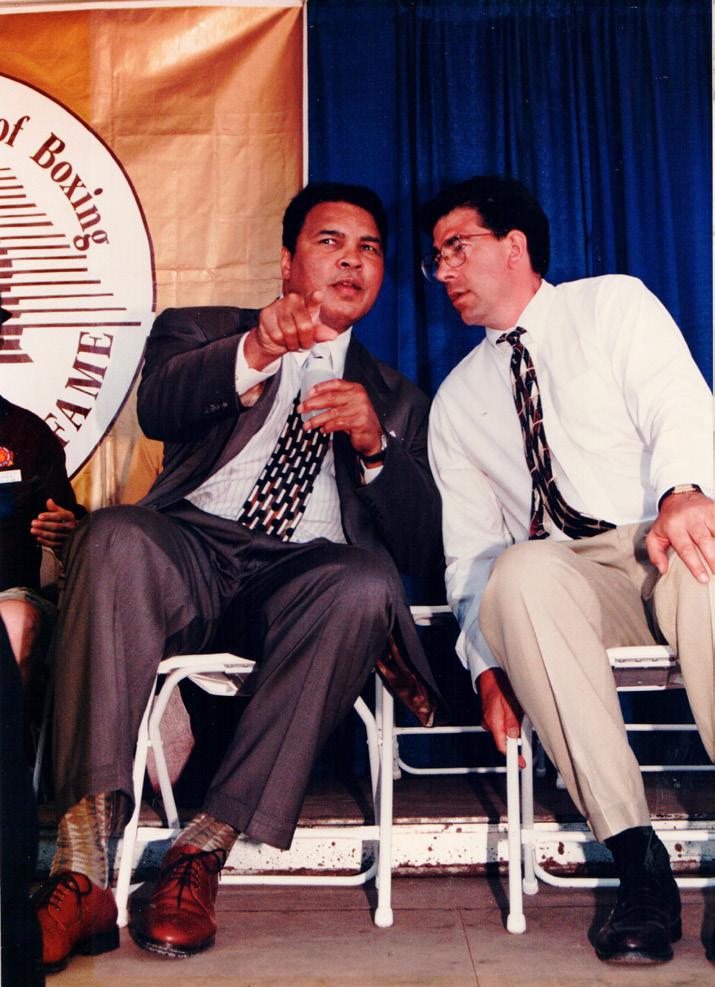
And on a daily basis Brophy gets to walk past what he said is the most historic artifact in all of boxing: the ring from Madison Square Garden. It hosted boxing’s most legendary fights from the 1920s until it was donated to the hall of fame in 2007.
All these years later, Brophy said he still gets a kick out of hearing people he knows in Florida or on vacation in another part of the world who tell him they saw a mention of Canastota and the hall of fame in the news.
“I’m energized by showing the world Canastota’s appreciation of boxing,” he said. “To me that’s very meaningful.”

Tim Ames and Michele Southgate, along with other local artists, wanted a cooperative shop in the Oswego area that would provide artisans with a gallery-like space where they could display their work, but also make the items available for sale.
Prior to starting the artists’ co-op, Ames was the owner and operator of the popular Rockin’ Robin restaurant in Oswego.
“Before that, I was in the entertainment industry as a singer, as well as the hospitality business in California,” he said.
In 2010, he entered his business plan into the Next Great Idea contest and won the $25,000 prize to start an artists’ co-op in Oswego, where he served as president and business manager from 2011 until he retired in 2017.
The shop opened as Lakeside Artisans at the Canal Commons, but the name was later changed to
Riverside Artisans.
It has moved to the front of the building at 191 W. First St. The shop now has more space and large windows that face the busy street. Ames and Southgate have moved on to other endeavors.
“We opened for business in March 2011. After six years, two heart attacks and a cancerous kidney removal, I decided it was time to retire and turn over the reins of Lakeside Artisans,” he said.
It was a difficult decision to leave something he instigated and loved, he admitted.
“But I knew that it was in good hands with the member artists. I was right, as it’s still going strong today as Riverside Artisans,” he said.
Since he retired, Ames, 81, has spent time traveling, playing with his dogs and developing his painting style. His style could be called “a combination of impressionism and realism,” he said.

“Although I don’t spend as much time painting as I use to, I think that I have been able to improve my techniques. I have been lucky enough to have entered and been accepted into some national competitions, where I have won some awards and even sold a couple of paintings,” he said. “My painting medium of choice is the fast-drying, water-based acrylics as opposed to the slowdrying time required of oil paints. My acrylic paintings and painting style, however, are hard to distinguish from oil paintings.”
His eastside Oswego home serves as an art gallery. A lot of his paintings depict scenes from Cape Cod.
“I spend a lot of time in Cape Cod,” he said, pointing to several paintings. “That’s Cape Cod. That’s Cape Cod. That’s Cape Cod up there.”
Dunes — a beach and seascape scene — was selected and purchased for display in the new patient recovery building of Upstate Hospital, Nappi
Wellness Institute. It was inspired by one of his many trips to Cape Cod.
Several other paintings are familiar visages of the Port City. Included are places like SUNY Oswego’s Rice Creek trails. He was commissioned by the Friends of Fort Ontario, to paint portrait of the historic warship, USS Oneida, which was built in the Oswego Shipyards, to commemorate its historic role in the War of 1812. It has been on a revolving display throughout New York state.
“I also painted a half dozen or so chicken paintings. People are crazy about chicken paintings. I don’t know… When I do paintings, I like to do series; so that it is actually a part of this [painting].”
The paintings are hung around several large fish tanks — in just about every room. Mostly all guppies — “hundreds, actually. I don’t like the really big fish,” he added.
His dog, Shadow, likes to snap at the fish through the glass, Ames laughed.
“He’s a mix – part husky and part golden retriever,” he said. “I can’t imagine life without a dog”
He pointed to a dining room set he had painted (as well as other furniture). “They stopped making this set in 1970. I looked it up on Google. This table and the buffet is worth $2,000. And I painted it. It was a little more than $2,000 actually,” he recalled with a smile.
Also displayed among the memorabilia is an old 45 he recorded.
“From entertainer to a restaurant owner — that’s the path a lot of entertainers follow — entertainment to service industry,” he said.
A question most painters often get and is impossible to answer is: How long does it take to do a painting?

“I have been able to satisfactorily complete a simple, small painting, in a few hours. However, a more complicated subject could take weeks or even months to complete,” he said. “I actually have paintings that I have been working on for years.
“Leonardo da Vinci once said, ‘Art is never finished, only abandoned.’ I think every artist knows this to be true. Knowing when to quit a painting is an art unto itself. There comes a point in the process that an artist runs the risk of overworking, and thereby ruining the artwork.”
Ames is continuing to work on his style.
“I’m trying to loosen up, as they say in the business,” he explained.
He has a large — very large — collection of brushes.
“I have twice as many over here,” he said pointing to a table behind his easel.
You can only use one at a time. “There’s a thing about brushes and artists, you never throw away an old brush — you never can tell when it might come in handy,” he added.
“A couple of years ago, I had planned to open a fine arts showroom, showcasing my own work as well as other fine artists, which would have been a complement to the artisans co-op. Unfortunately, the pandemic deemed otherwise. My works can be seen on my website, TimAmesArt.com, or by special appointment at my home art gallery,” he said.
“At the age of 55, I tried painting to help relieve the stress of operating my restaurant, The Rockin’ Robin, and it was love at first brushstroke,” he recalled. “I have had no formal art training, but to say that I’m self taught would be stretching it a bit, since I have been aided by an accumulation of books and recorded lessons by some great artists and teachers.”
He began with oils, but gravitated to acrylics, “which I found more suitable to my style of painting the landscapes and waterscapes of Upstate New York and Cape Cod.” He said. “I finally gathered up the nerve to enter my first competition and, surprisingly, my painting of Salmon River Falls won an award. Since then, my work has won in excess of 60 awards in regional, national and international art shows.”

Ames will continue to ply his craft. Finding more wall space might pose a problem, he chuckled.
 TOP: “Ocean Wave Series, #2.” Acrylic on hardboard...Inspired by summer excursions (before the pandemic) to Cape Cod.
MIDDLE: “Grassy Dunes on Cape Cod” …Inspired by many trips to Cape Cod. Recently selected and purchased by Upstate Hospital for display in their new Nappi Wellness Center
TOP: “Ocean Wave Series, #2.” Acrylic on hardboard...Inspired by summer excursions (before the pandemic) to Cape Cod.
MIDDLE: “Grassy Dunes on Cape Cod” …Inspired by many trips to Cape Cod. Recently selected and purchased by Upstate Hospital for display in their new Nappi Wellness Center

I’m at the age that many of my friends have lost a partner. Although they might not want to get involved in another relationship, they do miss the companionship.
Toward this end, I offer “consider a parrot.”
I read that parrots live anywhere from 30 to 100 years. It made me think that a parrot might fill this gap for companionship. You could teach the parrot to talk and, if you prefer, only express opinions that you agree on.
For example, while watching the news together and something gets you particularly upset and you say, “those damn (fill in the appropriate political party for you here) are idiots,” you can train your parrot to say, “You’re right, who the heck voted for them?”

You could take the parrot out to dinner, sort of like a service dog, only it’s a service parrot. (Who’s going to argue with you? Have you ever seen a parrot kicked out of a restaurant? Neither have I. So go for it.)
Then, given that you have trained the parrot to talk, you can say, “Honey, what are you having for your main course?” and the parrot will respond with your favorite dish (not including bird seed). Then you say, “That sounds good, do you want to share a salad?”
Actually that’s not too far-fetched a question as I think some parrots do eat lettuce, although I think it might cause them to have diarrhea, and given that they do fly, you probably wouldn’t be welcomed back to that particular restaurant again.
The preferable way to take your parrot out in public is keeping him or her (well, how do you actually know if it’s a boy or girl bird unless it lays an egg and I guess if it does, it’s flown the coop a few nights there) trained to sit through a meal.
I believe proper parrot etiquette is having the bird sit on your shoulder.
Of course, I’ve actually only seen pirates do it that way, not that I know that many pirates personally, but given that I have narrow shoulders, in my situation the bird would probably keep slipping off. Not a good look for either of us.
Another option would be on a leash like a dog, but as they take such small steps, it would take forever to walk to your table. Probably the best choice is a bird cage. It would have to be pretty large but if you had one custom made, you could have a drawer in it for your keys, wallet, glasses, pills, etc. which would make it easier to have two hands free to hold the cage. And then a place for leftovers as I don’t think they could probably finish a whole meal.
Just a warning, even though red and green are nice seasonal colors, I don’t think I’d let the parrot order spaghetti with red sauce. I mean, once again, think about your fellow diners.
Probably ordering chicken or duck could be awkward given the possible species relationships, like “oh no, that’s Aunt Clara with sauce l’orange.”
I think cows are a safe bet as are pigs, so steak or pork seems OK. With vegetarian being the safest, relationship-wise.
Another possible concern. If your parrot is a rescue, meaning it had a previous owner, I don’t think it’s like
erasing the hard drive on your computer when you acquire him or her. The parrot probably retained certain phrases from its previous owner. For instance, if the previous guy was a connoisseur of strip clubs (or is it habitué), if you have a wait person who is a female taking your order, there is the possibility of the parrot saying something inappropriate to the present occasion, like “take it off, take it all off,” or even something worse, and then, especially if you are a male parrot owner, it might look like you were the one who had spoken. That could be awkward. So we need to be a bit careful in that area.
As far as dinner conversation goes, even though we are not supposed to discuss politics or religion in public, parrots are very intelligent birds whose brains have evolved the same way as our brains have, so they might have some interesting insights into those areas and, as they don’t have any skin in the game (or should I say feathers) it might be an enlightening conversation all around.
Bon appetit.






Hockey sticks in hand and pulling or carrying their big equipment bags, one by one they make their way inside the Skaneateles Community Center on Tuesday and Thursday mornings.
They’re members of the Gray Wolves Senior Hockey club, a group of players ranging in age from 50 to 92. They enthusiastically take to the ice twice a week and scrimmage for 1½ hours on one of the center’s two rinks.
No score is kept and the emphasis is on recreation, getting a workout and camaraderie. While others have given up the game at their age, the Gray Wolves have found a frozen fountain of youth.
“People who ask I tell them I play old-fart hockey. We’re old men playing a kids’ game,” said Jim Hall, 72, of Marietta, who’s been playing with the group for the past 22 years.
The Gray Wolves come from all walks of life, with varying playing experience. Those on the ice, mostly retirees, include a doctor, a lawyer, a business owner, an airline pilot, a sheet metal worker, an electrical contractor,
a banker, an insurance broker, a marketer and a golf course owner.
The scrimmages take place yearround. After dividing themselves up into two teams, they follow a simple rule in regard to substitutions, which usually take place every couple of minutes.
“You skate; you get tired and get off the ice. And you don’t change when the puck is in the defensive zone,” said Steve Phelps, 73, of Fulton, a retired engineer and the group’s treasurer and tournament director. “There are some impact players, some who skate faster. We try to divide them up to balance the teams.”
There is no checking against the boards or slap shots allowed. When a player goes down, all play stops.

“Sometimes players get too competitive and you yell at them,” Phelps said. “If someone gets too aggressive, we tell them that’s not what we do here.”
Formed in 1990, the Gray Wolves over the years have called rinks in Lysander, Cicero and more recently Skaneateles their home ice.
The oldest, active Gray Wolf is John Anagnost, 92, of Manlius, a retired banker. Anagnost said he grew up in Sherburne in Chenango County, playing pond hockey and listening to Toronto Maple Leafs games on the radio.
He said for years he has run and cross-country skied to stay in shape. “And, yeah, I have a brown belt in judo,” he added.
“Why do I keep playing hockey? Because I can and I love it,” said the senior defenseman. “I play twice a week and I am alive when I’m out there.”
Anagnost said he’s always been a defenseman. “At my age, I’m not fast enough to be a forward. It’s all about positioning on the ice,” he said.
He related how goalies often “chirp” at their defensemen, complaining about them being in the way, not clearing a puck quick enough, among other things.
“We had one goalie who was scored upon three to four times and he was chirping at me,” Anagnost said. “So, the next time I got the puck I
turned and shot it at him and he saved it. And I said, ‘That’s the first one you saved today.’ He kinda laughed and so did I. We were friends after that. He doesn’t chirp at me anymore.”
Apart from the weekday scrimmages, the thirst for competition remains alive for some members who also travel to out-of-town tournaments for older players, competing in 50-, 60and 70-year and older divisions. Over the years, the Gray Wolves have fielded teams and traveled to competitions in Connecticut, Maryland, Pennsylvania and Canada.
In addition, the group now hosts its own tournament each spring at the Skaneateles Community Center.
Phelps said there’s no such thing as being an official Gray Wolves member.
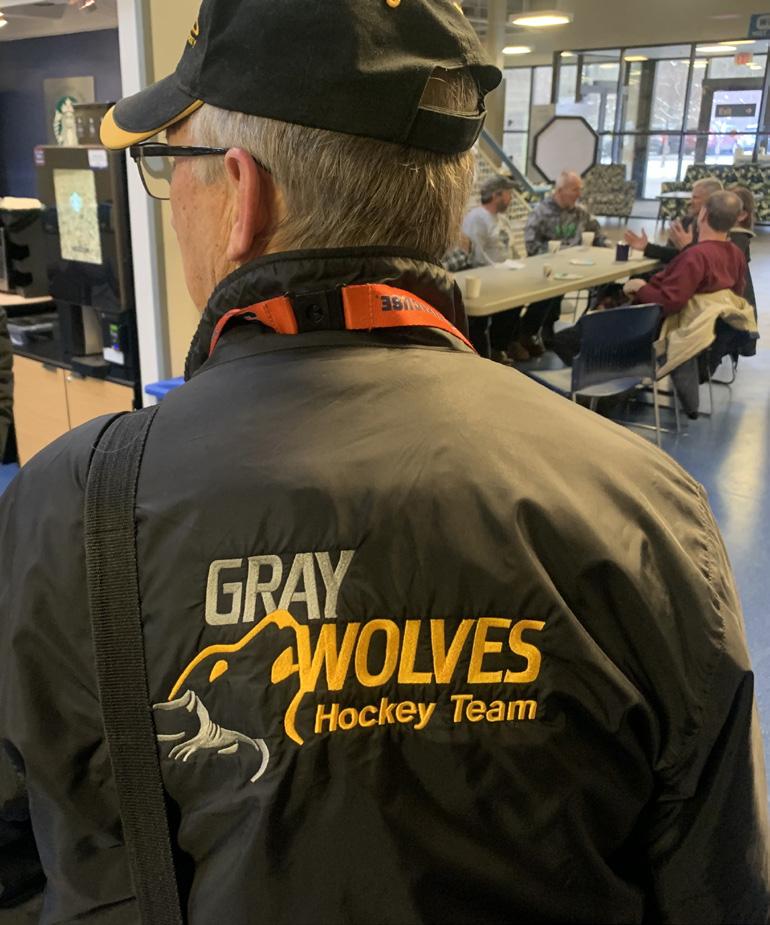
“We don’t have members. We’re just a collection of guys who get together and play,” he said, adding
“the group has an email list of nearly 90 players and on average 40 show and play on a regular basis.”
One of those players who shows regularly at the community center scrimmages and competes in tournaments is David VanSlyke, 75, of Cicero. He plays with prosthetic arms, the result of losing both his hands and forearms in his 40s following an electrocution accident while working as lineman for the telephone company.
Over the years, VanSlyke has stayed active by running, having completed 32 Mountain Goat runs, two Boilermaker runs and half a dozen marathons. He said he doesn’t race anymore, but still jogs and lifts weights.
He said his most memorable Gray Wolves moment came while skating in a tournament in Danbury, Connecticut. It happened during a face-off at his team’s end. At the
time, there was a women’s team there competing in the 30-year-old age group. Several members of that team spotted VanSlyke, realized he was playing with prosthetic arms and started chanting his name.
“And then several got behind the goal, against the glass. They lifted their shirts and showed their boobs,” he said. “I never looked up because it was a faceoff, but everyone else in the place got the show. They didn’t distract me. I was focused on the puck. I talked to the women afterward and they just thought I was cool.”
The weekday scrimmages at the Skaneateles Community Center often include Debbie Gardiner, 60, of Liverpool who plays goalie. A former lawyer who now works as a medical lab technician, she grew up in New Brunswick, Canada, and played hockey as a youngster with her brother on the river near their home.


“We threw together a girls’ team in high school,” she said. “I took a break from hockey for 18 years, had seven kids and got back to it my latter 30s.”
She particularly likes coming to Skaneateles, she said, because the older guys “take it easy on me. I love it. When you’re on the ice there are no distractions. You’re just there in the moment. It’s an adrenaline rush when they’re coming at you fast.”
The group’s “ringer” for the past decade has been bar owner Brian Elwell, an inductee of the Greater Syracuse Sports Hall of Fame and former member of the Syracuse Blazers, of the Eastern Hockey League. Elwell, now in his late 70s, hasn’t been playing recently with the Gray Wolves.
Then, there’s Marshall Webster, one of the original Gray Wolves, who played regularly until he was 95. Teammates said right up until the end his skating and playing ability was
something to see.
Jeff Averill, 77, of Marcellus, a retired Navy pilot, remembers one tournament in Laurel, Maryland, where a crowd gathered and kept growing larger when they realized a 90-year-old was skating for the Gray Wolves.
“Marshall scored a goal in front of them and the crowd went wild,” he said. “We all want to be Marshall Webster.”
Channel 3 TV weatherman Wayne Mahar played goalie with the Gray Wolves until he retired in 2021 and moved to South Carolina. He just turned 67 and is still loyal to the Gray Wolves. He plans to play goalie for them this coming March when they travel to Maryland for a tournament.


As with any sport, injuries are part of the game. The Gray Wolves have all had their share of such things as pulled muscles, bruises and in some cases lost
LEFT TO RIGHT: Ready to play, from left, Dan Socchio, 67, Paul Rosenberg, 67, and Wayne Chase, 75; .Wayne Chase, 75, sports his Gray Wolves jacket; Goalie Debbie Gardiner, 60, of Liverpool; Husband and wife. Warren Klick, 72, and his wife, Anne Dziuba, 66, of Burdett near Watkins Glenn. Warren is a retired physician; Anne is a retired physical therapist.
teeth during their years of playing.
“Need medical advice on anything? Someone in his room can probably give it,” smiled Jim Bonsted, 67, of Fayetteville, a small business owner, as he laced up his skates in the locker room before a scrimmage.
Anagnost, the eldest player, said over the years he’s dealt with a broken ankle, a concussion, a torn bicep and a torn rotator cuff.
Hall remembers one time when he tried to skate too fast around the net to clear a puck, tripped on something and crashed into the boards, cracking three ribs.
Afterward a lady at work, upon hearing of Hall’s injury, wanted to know how much longer he was going to keep playing “that kids’ game.”
He responded: “When the first shovel of dirt hits me in the face, that’s when I plan on stopping.”
Colin Aberdeen, the hat-wearing frontman for the raucous, SAMMY Award-winning band Los Blancos, still drawing crowds. “Every time I get to play music is a gift,” he says
 By Margaret McCormick
By Margaret McCormick
“Don’t quit your day job” is a way of suggesting that someone stick to the known and not pursue a career that isn’t certain to bring success. Artists, musicians and other creatives hear it all the time, and Colin Aberdeen is no exception. Or he was no exception.
About 25 years ago, Aberdeen gave up the security of a day job to
commit fully to playing music. And he’s been doing it ever since.
“It’s an eat-what-you-kill situation,’’ Aberdeen says. “I don’t have any family money. I don’t have a spouse with a good job. I live on what I make playing music and teaching an occasional lesson. It’s a humble existence. You’re a hero for a few hours a week if you’re lucky.’’
Aberdeen, 57, is a pillar of the Central New York’s music scene and one of its most recognizable members.
He’s the hat-wearing frontman for the raucous, SAMMY Award-winning band Los Blancos. And he’s also developed a following for several side projects, including duos like “Colin and Max’’ and his one-man venture, “CA Solo.’’
“Colin is a sage soul whose genuine knowledge and appreciation of American roots music is clearly evident in the convincing style of his performances, as a singer and guitarist,’’ says former Central New York radio personality Dave Frisina, who now resides in Florida and continues to spotlight local music on his Sunday morning streamed show, “Soulshine’’ (www.soulshineradio. com). “I’m glad to be both a fan and a friend.’’
Aberdeen was born in London to an Australian father and British mother. He moved to the United States
as a boy and to Central New York as a teenager. His father, a surgeon, asked him one day what he wanted to do with his life. “Play music and travel,’’ young Colin responded. There was just one problem: He didn’t yet play an instrument. He had some friends who played music, and he accompanied them on vocals sometimes. One Christmas, there was a guitar under the tree. It was acoustic and difficult to play, Aberdeen recalls, but he taught himself, kept at it, and absorbed as much as possible from musicians who mentored him.
He graduated from FayettevilleManlius High School in 1983 and worked the door at a local club checking IDs. It was there he realized he’d rather be outside playing and took his guitar to the street. Eventually, he was invited inside to play bars and clubs. “I’ve been gigging ever since,’’ Aberdeen says. A “nomadic period as a burgeoning guitar player’’ took him to West Australia (where he has family), Colorado, California and elsewhere in the U.S. He returned to Central New York and worked more than a decade for Kerner & Merchant Pipe Organ Builders before leaving that job to give music his all.

If you’re a Central New Yorker of a certain age with an appreciation for live music, you might know Aberdeen as the founder of the Westcott Jug Suckers. The band had its start in the late 1980s and its members still get together for events like the annual Golden Harvest Festival at Beaver Lake Nature Center and the New York State Blues Festival. In the mid-1990s, Aberdeen co-founded Los Blancos with Jose Alvarez, Steven T. Winston and Paul Roehrig.
The current Los Blancos lineup features Aberdeen on guitar and vocals, Winston on bass and vocals, and Mark Tiffault on drums and percussion instruments. The fourth chair is occupied by Max Eyle on piano and harmonica and Bruce Gerow on accordion. Eyle stands out as youthful in a group of seasoned veterans that Aberdeen is known to describe in jest as “long in the tooth.’’ He calls Winston his “longest-suffering accomplice,’’ and describes him as a virtuoso who writes songs “and can play literally anything.’’ Tiffault, another veteran member, supplies the backbeat, as he has for countless local bands and national acts.
Los Blancos plays a combination of cover tunes and originals and is known for its gumbo of styles: blues, rock, folk, funk, country, Zydeco, ragtime — a virtual musical stew. Some of their regular haunts include Shifty’s Bar and Grill and The 443 Social Club and Lounge, both on Burnet Avenue in Syracuse. At The 443, Los Blancos has a monthly Sunday afternoon gig called Nachos and Blancos, which Aberdeen always looks forward to.
“It’s a fun hang,’’ Aberdeen says of The 443. “It’s really such a nice place to play. It’s great to have a place that’s truly a dedicated music venue.’’ 443 co-owner Julie B. Leone returned the compliments near the end of a set featuring tunes by Robert Johnson, Booker T and the M.G.’s and Muddy Waters, as well as a couple original songs by Winston. “This is our most fun event,’’ she said Feb. 18, as she presented the band an award for its fifth consecutive sold-out show. “We sell out every single month.’’
Los Blancos was the headliner when The 443 opened in 2019 (as The Listening Room) and the band and Aberdeen’s duo and solo projects have been on the schedule regularly since that time. It’s win-win, Leone says: Besides bringing the music, Aberdeen and company are savvy marketers. “When I book a show with Colin, whether it’s Los Blancos or one
of his other projects, I know we will be working as a team to promote it and make it an awesome event for everyone involved,’’ Leone explains.
Aberdeen uses Facebook as a tool to promote Los Blancos and his other projects and to share snippets of his life as a father, son, and advocate for people with disabilities.
His mother Virginia, 93, lives in the area and his daughter Marley, 15, is in high school. Marley has cerebral palsy, a neurological disorder that affects her movement and muscle coordination, among other things. Both his mother and daughter give him immeasurable support and “keep me in check,’’ Aberdeen says. Both were in attendance for the February edition of Nachos and Blancos.
“Marley has always been around my gigging life,’’ Aberdeen notes. “There’s nothing like sharing what you love with your kid and friends.’’
As the members of Los Blancos get a bit older, Aberdeen says they appreciate afternoon and early evening gigs. “I don’t really like to be loading out at 2:30 in the morning,’’ he says with a smile. But late nights come with the territory and playing always beats not playing. Aberdeen says he will pass on a solo gig if there’s an opportunity for Los Blancos to play.
Los Blancos and bands everywhere found themselves with blank calendars and nowhere to perform during the height of the pandemic in 2020 and 2021.
Aberdeen adapted, taking “CA Solo’’ to Facebook Live, where he hosted “CA’s House Party for ShutIns’’ on Saturday nights. He’s grateful for support from longtime local fans and new fans from around the world, who tuned in and sent donations via a virtual “tip jar.’’
“CA Solo’’ is a long-running (17 years) Tuesday night feature at The Limerick Pub in downtown Syracuse. Aberdeen brings a couple guitars and performs two sets starting at 9 p.m. each week. You might hear him play a folk classic like “Freight Train’’ by Elizabeth “Libba’’ Cotten (a songwriter and left-handed guitar playing legend who lived in Syracuse in her later years) and sprinkle in a song or two of his own.
“Every time I get to play music is a gift,’’ Aberdeen says.
For more information on Los Blancos visit www.casablancos.com.
As the new executive director of the Onondaga Historical Association, Lisa Romano Moore and her 13-member staff are keepers of the Central New York history, dating back generations.
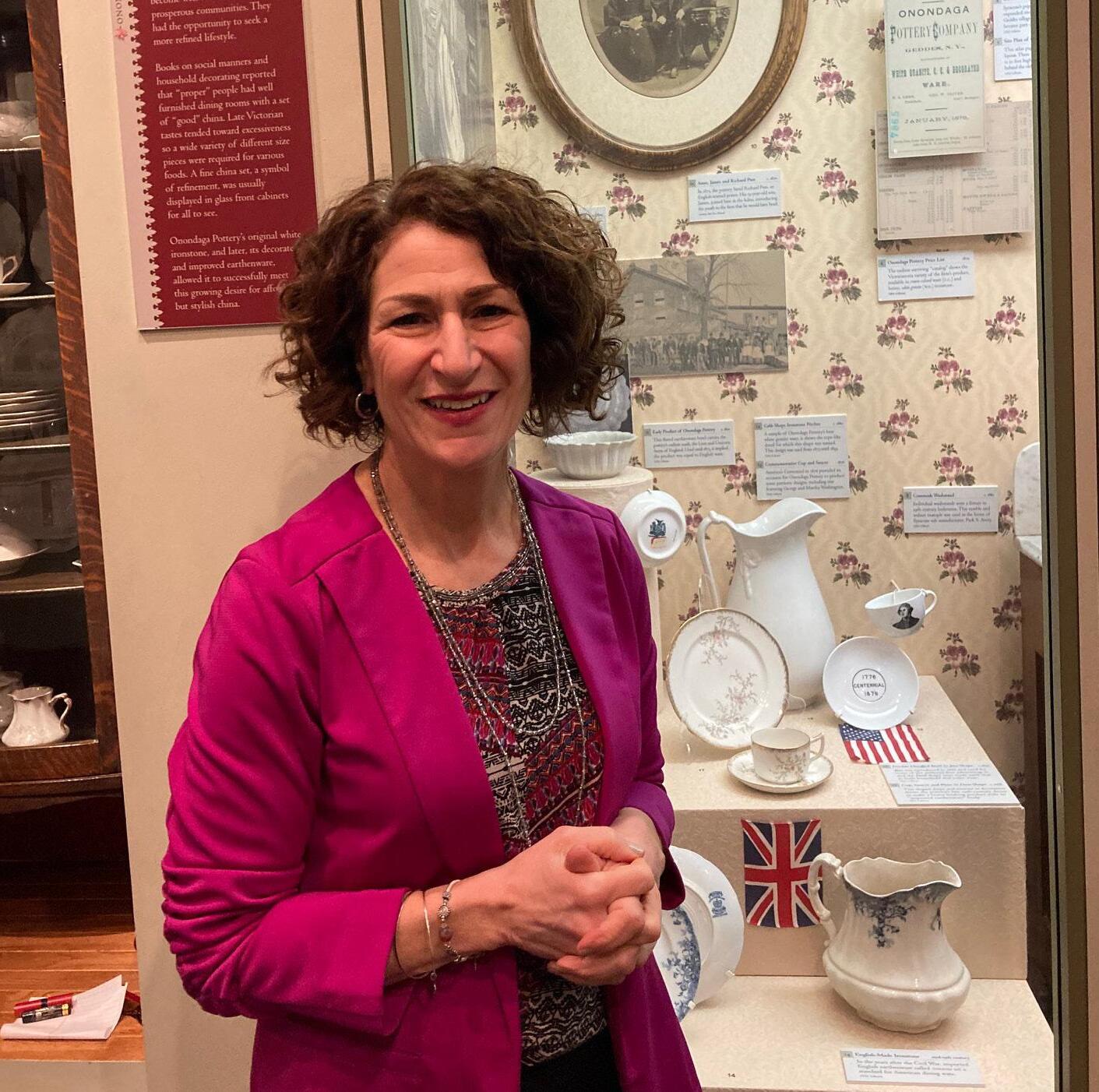
“We’re the collectors, the preservers, the interpreters of both Onondaga County and the city of Syracuse history,” Moore explained.
As such, she and her team oversee the management or maintenance of collections not only at the Onondaga
Historical Museum in downtown Syracuse, but also the Skä•noñh — Great Law of Peace Center in Liverpool and the Brewseum at Heritage Hill in Jamesville. Moreover, displays, historical signage, and photos from the OHA are at the Syracuse Hancock Airport, along the Syracuse Creekwalk, the Military History Museum at the OnCenter War Memorial, and in various buildings downtown.
“Just how pervasive OHA is in the fabric of this community is hard
to miss,” she said.
And too, these pieces and displays also underscore the vital role that Moore believes history plays in a community’s life.
“People love to remember what they consider the good old days, when they were kids and what their neighborhood was like,” she said.
But there’s also the importance of understanding the impact of things and events on our history and our experience, such as the issue of Interstate 81, she added.
It’s “a huge discussion right now and we’re documenting that and making sure that whenever, whatever 81 looks like in the next 25 years, those who follow us are going to have a sense of the conversation that was had around it,” she explained.
Her own history is rooted in Central New York.
She grew up in Auburn and her grandfather was a stone mason on Syracuse’s northside. He helped build the former GE plant in Liverpool and the smokestacks at Crucible in Solvay.
After serving as the OHA director of development for three years, Moore, 55, was selected in January as executive director, replacing Gregg Tripoli, who retired from that post at the end of 2022, having served since 2008. Tripoli has been credited with revitalizing the OHA and strengthening its role in the community.
In the three years that she worked with Tripoli, she said she was able to “see the cycle of events and activities and his priorities” and to get a sense of how to move forward.
Looking ahead, Moore plans to maintain “the things that people love about the OHA,” she said. “Just because you have a change in leadership doesn’t mean that everything’s going to be turned inside out and upside down.”
One of Moore’s plans in moving forward is to keep up with partnerships that Tripoli had developed during his tenure. That includes continuing to work with the Stickley House Foundation on renovating Gustav Stickley’s home on the city’s east side into a guest house with an arts and crafts style. Also, the discussion of the Columbus statute in downtown

Syracuse and providing some historical perspective for Heritage Park, located across the street from the statue, she explained.
She also is planning an upgrade to the heating and ventilation in the OHA Museum downtown, providing better environmental controls to protect some of the museum’s more fragile artifacts, such as newspapers, some of which date back to the Civil War.
Another of her goals is to get more of their research materials digitized. For example, when local channels 3 and 5 consolidated to form CNYCentral, the OHA got about 7,000 newsreels of the nightly newscasts from the 1960s and ‘70s. She noted that in one, there was a discussion on school vouchers, which is still a conversation today, she said.
She would also like to do more in collecting and preserving generational materials, for example correspondence and items that were made in Syracuse. She told of receiving a collection of letters from a descendant of the Sedgwick family that were written from a young Civil War soldier to his wife-to-be and his mother. These “tell the story of where we came from,” she said.
Moore also emphasized that the OHA is much more than its exhibits and artifacts and unique gift shop. It is a resource for other museums and
researchers worldwide.
Moore offered several examples.
Libba Cotten’s Grammy and guitar are on loan to the Rock and Roll Museum in Cleveland. Cotten was an award-winning folk and blues musician, who had lived for some time in Syracuse and died here.
Television host, legal commentator and author Dan Abrams did research at the OHA for the book, “Theodore Roosevelt for the Defense,” that he co-wrote, chronicling the famous libel trial held in the Onondaga County Courthouse in 1915 between Roosevelt and a former chairman of the Republican Party, William Barnes.
“It’s an amazing enterprise to see where our materials go, how they’re utilized,” Moore said.
She looks forward to several projects. In the fall, “Suit Up” will feature uniforms and other memorabilia from various professional and college teams from the Central New York community. Another one, which is probably two years away, has the working title of “The Way We Weren’t,” featuring strategies or plans that never quite made it off the drawing board. And due to come out at the end of the year will be a book that shares the stories of the magnificent mansions that once lined James Street and the people who lived there.
With thousands of artifacts to choose from, Moore found it fairly easy to identify what is probably the OHA’s most unique piece and her favorite collection.
One of the rarest, in her opinion, is called the “The Hairy Eagle.” She explained that there was a time during the Victorian era when heirlooms, like a ring or a broach, might contain a lock of a loved one’s hair. The “Hairy Eagle” goes well beyond that, though. The sculpture of an eagle was created, made out of Abraham Lincoln’s hair, along with tresses from his wife, Mary Todd Lincoln; and various members of the Lincoln Cabinet. The artwork was featured in a 2021 issue of Smithsonian Magazine. While the piece is housed on one of the upper floors of the museum, Moore admitted that due its fragile nature, it’s rarely on public display.
Her favorite —and one of the public’s too —is the extensive display of Syracuse China, located on the museum’s second floor. One might not consider dishes to be historical, but as Moore explained, it can evoke smells and sounds and memories of family gatherings.
“History is really personal. It’s their identity,” she said. “We’re living it all the time.”

Turning 65 or new to Medicare?
Turning 65 or new to Medicare?
Humana puts solid Medicare experience at your service
Humana is committed to providing you with the right Medicare coverage for you. That means helping you choose the plan that meets your healthcare needs and your budget. Like a Medicare Advantage plan that includes everything Original Medicare has—and may have benefits you might not get with Medicare Part A and Part B.
Humana strives to go above and beyond to help you get the care you need. That’s called human care.
Call a licensed Humana sales agent
To match you with the right Medicare Advantage plan to meet your needs
NANCY SPINELLA

To match you with the right Medicare Advantage plan to meet your needs
Humana is committed to providing you with the right Medicare coverage for you. That means helping you choose the plan that meets your healthcare needs and your budget. Like a Medicare Advantage plan that includes everything Original Medicare has—and may have benefits you might not get with Medicare Part A and Part B.
To match you with the right Medicare Advantage plan to meet your needs
315 516 4716 (TTY: 711)

Monday – Friday, 8 a.m. – 5 p.m. NSpinella@Humana.com facebook.com/nspinellalicensedsalesagent
Humana is committed to providing you with the right Medicare coverage for you. That means helping you choose the plan that meets your healthcare needs and your budget. Like a Medicare Advantage plan that includes everything Original Medicare has—and may have benefits you might not get with Medicare Part A and Part B.
To match you with the right Medicare Advantage plan to meet your needs
Humana strives to go above and beyond to help you get the care you need. That’s called human care.
Humana strives to go above and beyond to help you get the care you need. That’s called human care.
Humana is committed to providing you with the right Medicare coverage for you. That means helping you choose the plan that meets your healthcare needs and your budget. Like a Medicare Advantage plan that includes everything Original Medicare has—and may have benefits you might not get with Medicare Part A and Part B. Humana strives to go above and beyond to help you get the care you need. That’s called human care.
Call a licensed Humana sales agent
Call a licensed Humana sales agent
Call a licensed Humana sales agent
Humana is committed to providing you with the right Medicare coverage for you. That means helping you choose the plan that meets your healthcare needs and your budget. Like a Medicare Advantage plan that includes everything Original Medicare has—and may have benefits you might not get with Medicare Part A and Part B.
NANCY SPINELLA 315 516 4716 (TTY: 711)
NANCY SPINELLA 315 516 4716 (TTY: 711)
Monday – Friday, 8 a.m. – 5 p.m. NSpinella@Humana.com facebook.com/nspinellalicensedsalesagent
Humana strives to go above and beyond to help you get the care you need. That’s called human care.

NANCY SPINELLA 315 516 4716 (TTY: 711)
Monday – Friday, 8 a.m. – 5 p.m. NSpinella@Humana.com facebook.com/nspinellalicensedsalesagent
Call a licensed Humana sales agent
NANCY SPINELLA 315 516 4716 (TTY: 711)
Humana
gender
Monday – Friday, 8 a.m. – 5 p.m. NSpinella@Humana.com facebook.com/nspinellalicensedsalesagent
Monday – Friday, 8 a.m. – 5 p.m. NSpinella@Humana.com facebook.com/nspinellalicensedsalesagent
A more human way to healthcare™
marital status, religion or language.English:
ATTENTION: If you do not speak English, language assistance services, free of charge, are available to you. Call 1‑877‑320‑1235 (TTY: 711). Español (Spanish):
ATENCIÓN: Si habla español, tiene a su disposición servicios gratuitos de asistencia lingüística. Llame al 1‑877‑320‑1235 (TTY: 711). 繁體中文 (Chinese): 注意:如果您使 用繁體中文 ,您可以免費獲得語言援助服務 。請致電 1‑877‑320‑1235 (聽障專線:711)。
Y0040_GHHJEXNEN_23_AD_M
Humana is a Medicare Advantage HMO, PPO and PFFS organization with a Medicare contract. Enrollment in any Humana plan depends on contract renewal. At Humana, it is important you are treated fairly. Humana Inc. and its subsidiaries comply with applicable federal civil rights laws and do not discriminate on the basis of race, color, national origin, age, disability, sex, sexual orientation, gender, gender identity, ancestry, ethnicity, marital status, religion or language.English: ATTENTION: If you do not speak English, language assistance services, free of charge, are available to you. Call 1‑877‑320‑1235 (TTY: 711). Español (Spanish): ATENCIÓN: Si habla español, tiene a su disposición servicios gratuitos de asistencia lingüística. Llame al 1‑877‑320‑1235 (TTY: 711). 繁體中文 (Chinese): 注意:如果您使
A more human way to healthcare™
。請致電 1‑877‑320‑1235 (聽障專線:711)。
A more human way to healthcare™
Humana is a Medicare Advantage HMO, PPO and PFFS organization with a Medicare contract. Enrollment in any Humana plan depends on contract renewal. At Humana, it is important you are treated fairly. Humana Inc. and its subsidiaries comply with applicable federal civil rights laws and do not discriminate on the basis of race, color, national origin, age, disability, sex, sexual orientation, gender, gender identity, ancestry, ethnicity, marital status, religion or language.English: ATTENTION: If you do not speak English, language assistance services, free of charge, are available to you. Call 1‑877‑320‑1235 (TTY: 711). Español (Spanish): ATENCIÓN: Si habla español, tiene a su disposición servicios gratuitos de asistencia lingüística. Llame al 1‑877‑320‑1235 (TTY: 711). 繁體中文 (Chinese): 注意:如果您使 用繁體中文 ,您可以免費獲得語言援助服務 。請致電 1‑877‑320‑1235 (聽障專線:711)。
Humana is a Medicare Advantage HMO, PPO and PFFS organization with a Medicare contract. Enrollment in any Humana plan depends on contract renewal. At Humana, it is important you are treated fairly. Humana Inc. and its subsidiaries comply with applicable federal civil rights laws and do not discriminate on the basis of race, color, national origin, age, disability, sex, sexual orientation, gender, gender identity, ancestry, ethnicity, marital status, religion or language.English: ATTENTION: If you do not speak English, language assistance services, free of charge, are available to you. Call 1‑877‑320‑1235 (TTY: 711). Español (Spanish): ATENCIÓN: Si habla español, tiene a su disposición servicios gratuitos de asistencia lingüística. Llame al 1‑877‑320‑1235 (TTY: 711). 繁體中文 (Chinese): 注意:如果您使 用繁體中文 ,您可以免費獲得語言援助服務 。請致電 1‑877‑320‑1235 (聽障專線:711)。
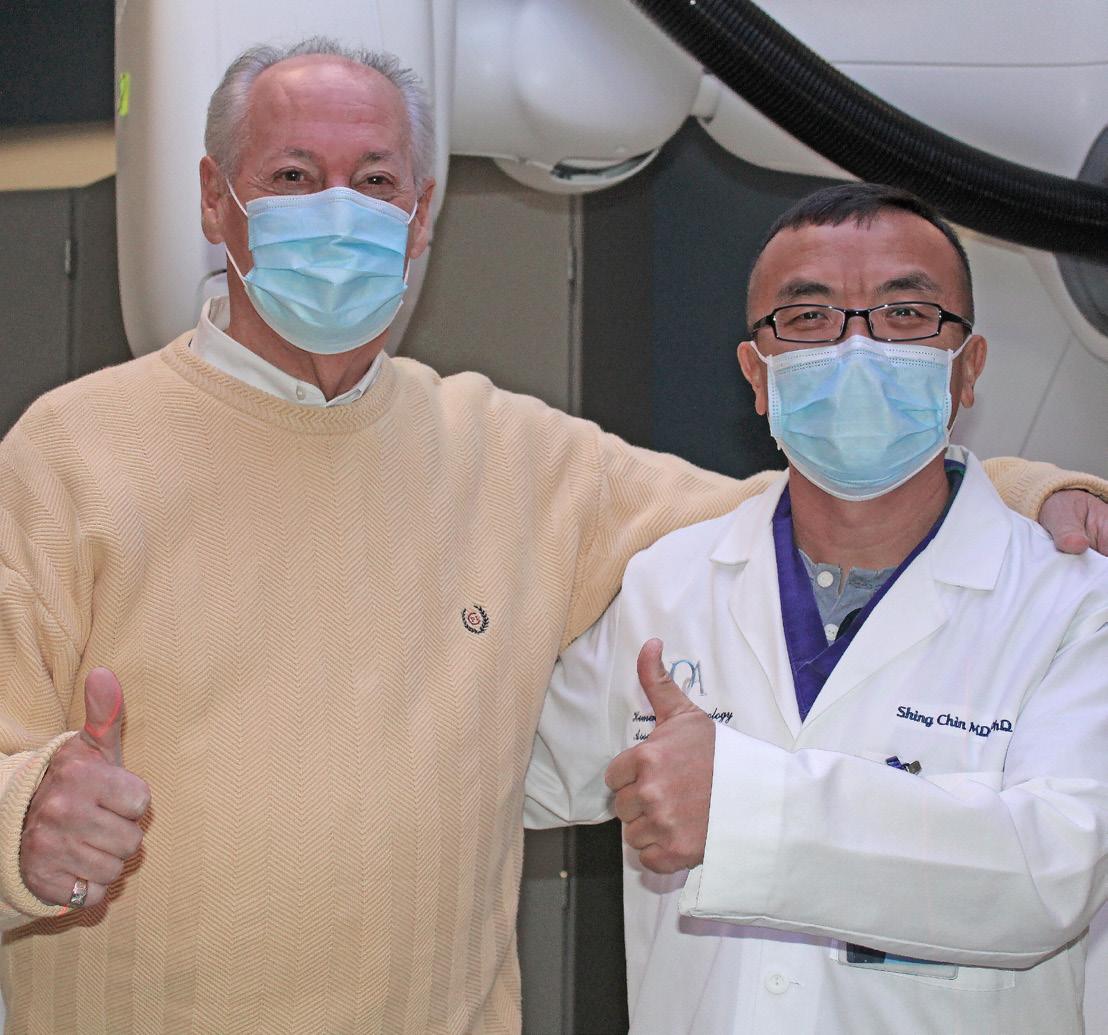
Humana is a Medicare Advantage HMO, PPO and PFFS organization with a Medicare contract. Enrollment in any Humana plan depends on contract renewal. At Humana, it is important you are treated fairly. Humana Inc. and its subsidiaries comply with applicable federal civil rights laws and do not discriminate on the basis of race, color, national origin, age, disability, sex, sexual orientation, gender, gender identity, ancestry, ethnicity, marital status, religion or language.English: ATTENTION: If you do not speak English, language assistance services, free of charge, are available to you. Call 1‑877‑320‑1235 (TTY: 711). Español (Spanish): ATENCIÓN: Si habla español, tiene a su disposición servicios gratuitos de asistencia lingüística. Llame al 1‑877‑320‑1235 (TTY: 711). 繁體中文 (Chinese): 注意:如果您使 用繁體中文 ,您可以免費獲得語言援助服務 。請致電 1‑877‑320‑1235 (聽障專線:711)。
Y0040_GHHJEXNEN_23_AD_M
Frank chose non-surgical CyberKnife® at HOA –offering 5 treatments instead of 35!

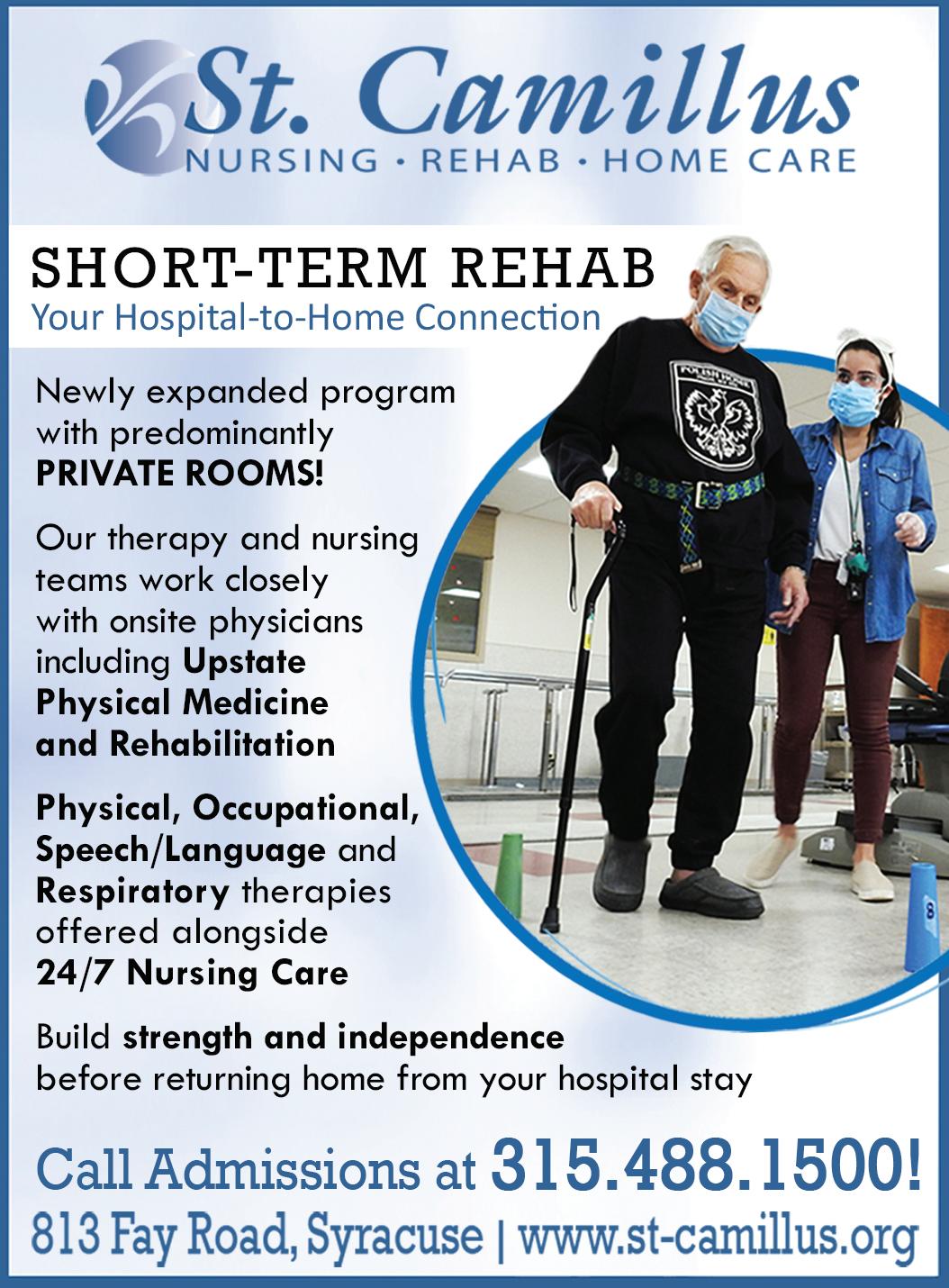
Y0040_GHHJEXNEN_23_AD_M
To hear more of Frank’s story and learn if CyberKnife is right for you, visit hoacny.com
“The original diagnosis was to treat my prostate cancer with seven weeks of radiation, five days a week. I was kind of upset that I was never given the option of CyberKnife,” said Frank. “The precise radiation achieved by CyberKnife, far fewer treatments, and the personalized care I received from Dr. Chin and his team made my decision an easy one. Better, the treatment was a real success!”
Team of about 130 volunteers, many over 55, assists first-generation students get in and remain in college
By Mary Beth RoachBeverly Carter, 62, of Syracuse, is an extrovert with a capital E, and as such, she seems perfectly suited as a volunteer driver for the On Point for College program, transporting students back and forth from college.
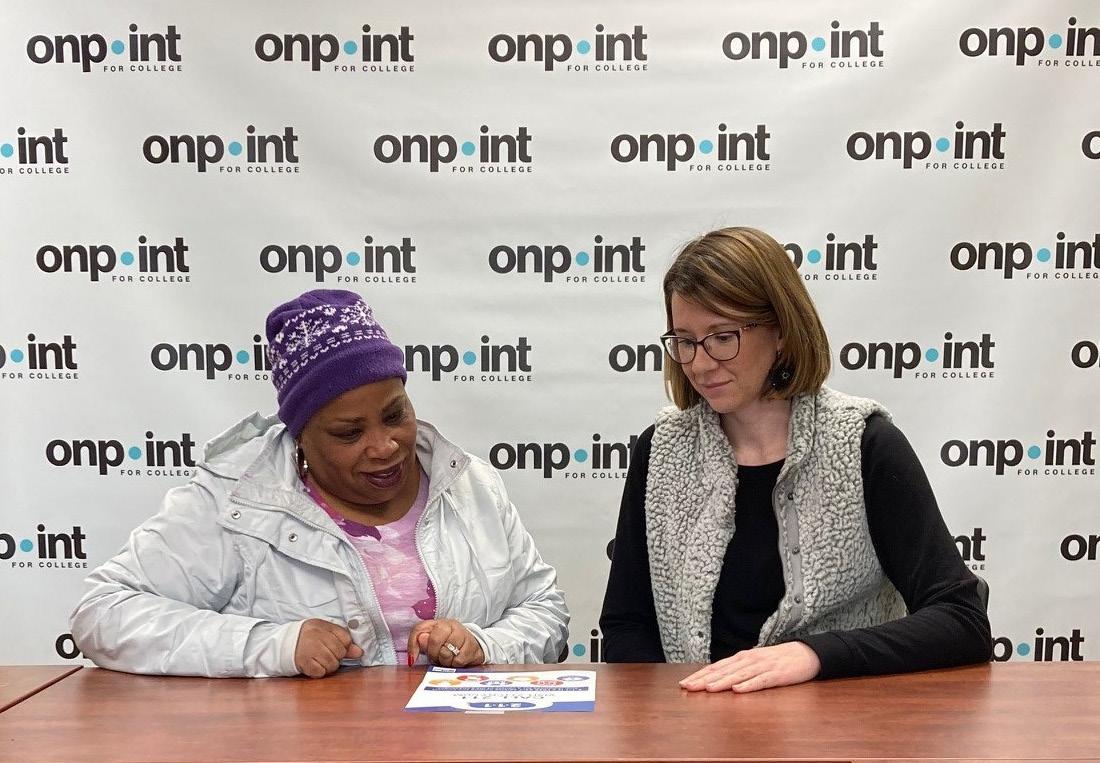
Jeannette Artini, also 62, of Camillus, had just retired last spring after 40 years in the technology industry, and within weeks, she
became as a mentor with On Point. She was matched with Amina Amin, 21, who was born in a refugee camp in Kenya, spent her early years between Somalia and Kenya, came to the United States in 2015 and is attending Syracuse University.
Carter and Artini are just two of 130, many of them 55 years of age or better, who give their time and talents to On Point, a program begun
in 1999 by Ginny Donahue to assist first-generation students get in and remain in college and then succeed after graduating.
Carter said she has always been community-minded — a trait she attributed to her mother — and she estimated that she has been a volunteer for at least seven years. Her brother, Sam Rowser, is On Point’s current executive director.
Artini opted for a different volunteer role, helping Amin in a variety of ways.
“I think I’m her cheerleader, and it’s easy because she’s outstanding,” Artini said.
When Amin first arrived in this country, she faced some bullying and challenges with the English language. Yet, she excelled scholastically. She is in pre-med now, hoping to become a pediatrician, a decision she made after seeing the long lines of parents and children waiting for medical care at the refugee camp. While she is doing well academically, Amin said that she thought that she needed to get
out of her “comfort zone” and begin networking.
With Artini’s help, she is doing just that. For instance, Artini has introduced Amin to Kristen Kratzert, an OB-GYN, now retired, who had founded the Woman’s Wellness Place in Syracuse in the mid-1990s. She thought it was important for Amin to get a sense of the variety of opportunities in the medical arena and to see first-hand how medicine is practiced in the everyday world. Artini believes it is important for women to help other women in the professional fields. She also helped Amin when she had to decide whether to attend SU or LeMoyne College. Amin said that once she reaches her career goals, she is looking forward to return to that refugee camp and help the people there.

She said that she cannot tutor Amin since the latter’s coursework in biology and chemistry is not Artini’s bailiwick, but she can help line up a tutor if and when needed.
“I really wanted to see an impact one-on-one” and make a difference, she said.
That desire to make a difference seems to be the common thread for the volunteers that get involved in the program, according to Katie Schmid, volunteer coordinator for On Point for College.
“The whole concept of helping a young person succeed is something that’s very universal,” she said. “That idea of paying it forward is really appealing.”
There are a variety of ways the volunteers can make that difference, such as driving, like Carter, or mentoring, such as Artini does. With the COVID-19 pandemic, Schmid explained that On Point began expanding its volunteer opportunities and they now offer a phone outreach program, career services support and more tutoring.
One woman who currently resides in California, for example, offers resume´ clinics over Zoom.
All volunteers undergo training, a background check and the New York state anti-harassment training, Schmid noted. Some volunteer roles have specific commitment levels, she added. Those who wish to become mentors, for example, need to be prepared to make a six-month commitment.
While the volunteers can see the impact they’re having, some, like Carter and Artini, seem to have deeper experiences.
Artini said that her experience is giving her hope.
“If Amina’s a sample of young immigrants coming to our country and making a difference, the future’s bright,” she said.
For Carter, her work has given her peace and in a way, freedom.
She does not get financial compensation for gas or the wear and tear on her car, but she said that the lessons she has learned from these young adults are more valuable to her.
She recounted two examples.
A few months ago, she was taking
a young man to college. He had been homeless and had just gotten into a shelter several weeks prior. During the ride, he expressed his gratitude to Carter and his excitement at being able to better his education.
“I’m thinking to myself, ‘Wow! How do I take life for granted!’” she said.
Another time she was taking a young woman to school, and according to Carter, the student said, “’Isn’t it something for you to be the one to take me to school?’” Carter was a little confused by the statement. The student continued, telling her that “people come to help you, but we want to pick who comes.”
This second statement hit Carter like a lightning bolt.
Carter explained that as a child, her parents had split, her mother had remarried, and she lived with her mom and stepfather, whom she called “Dad 2.” Her biological father’s presence in her life was sporadic and it was a hurt that she harbored for some time. But that girl’s statement made her realize, she said, that while growing up, she had still had a place to live, food on the table. She understood, at that moment, that those who you think should rescue you, might not be the ones who do.
“It’s not who gives it; it’s that you have it,” she said.
That experience, Carter said, gave her freedom.
Those interested in learning more about the program, can visit www. onpointforcollege.org
OPPOSITE PAGE: Beverly Carter and Katie SchmidFamilies often wonder whether it is safe for an older adult to keep driving.

There are more than 40 million licensed drivers in the US older than 65 and more than two million of them are here in New York state. And many — probably most — are safe. They have years of experience handling various road and traffic conditions.
Older drivers are more likely to obey the rules of the road and to wear seatbelts.
As people age, many factors can affect driving ability.
• Bone and joint problems — Older people often develop arthritis, stiff joints and stiff muscles. This impairs the ability to turn to look behind, to control the steering wheel or brake quickly.
• Vision problems — Eye diseases such as cataracts, glaucoma, macular degeneration and diabetic retinopathy become more prevalent with age. Poor vision interferes with the ability to detect people, animals and objects. It makes it harder to see in the dark. Cataracts can lead to glare from oncoming headlights.
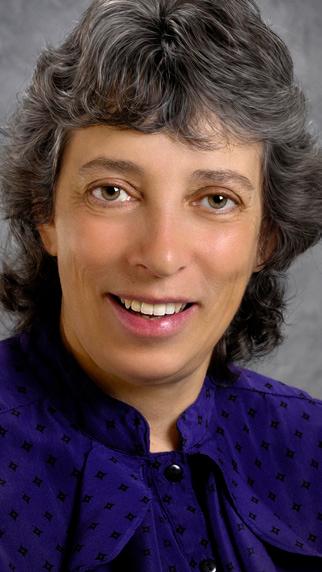
• Hearing loss — Age-related hearing loss affects the ability to detect horns, sirens or noises coming from the car itself. Perhaps you’ve been behind a driver who leaves the turn signal on because they can’t hear the blinking noise.
• Medications — Many medications lead to drowsiness or decrease alertness. Even some over-the-counter drugs such as diphenhydramine (Benadryl) cause drowsiness.
Slower reaction time
Medical conditions — Dementia, Parkinson’s disease or neurological deficits from a stroke are a few of the
diseases that impact driving ability. There are ways to help compensate for some of these problems. Be sure to wear glasses with an up-to-date prescription. And clean the lenses. If you wear hearing aids, use them while driving. Stay physically active to maintain strength and flexibility. Be sure your car is in good running condition. Avoid driving in the dark if you have trouble seeing at night and avoid times near sunset or sunrise to avoid glare. (Of course, in Central New York that only applies if there is actual sunny weather!). Don’t drive if you are feeling sick, stressed or tired. Plan your timing to avoid heavy traffic when possible. Stay home in bad weather. Wear seatbelts. Avoid distractions such as eating or using a cell phone. Scrape and clean your windshield and windows.
What are some signs that an older driver might no longer be safe on the road?
– Multiple accidents, dents and scrapes.
– Two or more traffic tickets within two years.
– Increases on car insurance premiums due to driving issues.
– Complaints by neighbors and others about unsafe driving.
– Recommendations from a doctor to quit driving or modify driving habits.
We live in a very car-centric society and it is not easy to give up the independence that comes from being able to drive where you want to go when you want to go.
Unless you live someplace with great public transportation or within walking distance of everything, it means depending on others to get around, to shop, to run errands. Before broaching the subject with a family member that is no longer a safe driver, be prepared. Find out what resources in the community could help with transportation. Avoid confrontation. Stick to the issue of driving ability, not age. Focus on safety. It might be necessary to approach the topic gradually over time to gain buy-in. But for your loved one and for your community, don’t ignore risky drivers.
We applaud our laboratory professionals. Those who have recently joined us and the dedicated employees who have been with Laboratory Alliance since we began 25 years ago. They all play a vital role in health care and patient advocacy.

While most patients do not have contact with our laboratory professionals, they play key roles in the detection, diagnosis and treatment of disease.
Medical Laboratory Professionals Week, April 24-30, is an opportunity to celebrate and thank our hardworking team.


For over 41 years, OMC has been helping people just like you plan for the next phase of their lives: retirement. Cynthia and Greg work directly with their clients, addressing the issues most important to them, including:
For over 37 years, OMC has been helping people just like you plan for the next phase of their lives: retirement. Cynthia and Greg work directly with their clients, addressing the issues most important to them including:

♦ Rolling over 401 (k) & 403(b) plans- we handle everything
♦ Reviewing retirement accounts-- they may be your largest asset
♦ Managing 401 (k) & 403(b) plans- while you're still working

♦ Coordinating the big picture-private & retirement investments need to work together

♦ Drawing income from your investment- keeping up with low interest rates
CELEBRATING 41 YEARS
DeWitt town supervisor never envisioned to run for office. Then in 2007 he changed his mind
By Charles EllisEd Michalenko never envisioned that he would spend 25 years — and counting — in politics. He certainly didn’t think
about that when he was loading trucks for UPS while attending Onondaga Community College and Cortland State. And it probably never crossed
his mind those summers when he was doing construction work while living with his in-laws in New York City after he was married and was working on his doctoral degree.
“I made as much money in those six or eight weeks of construction work as I made as a teaching assistant the rest of the year,” he said.
Nonetheless, he didn’t want a life in construction. His plan was to become a college professor.
Michalenko was born in Syracuse and moved to East Syracuse when he was in second grade and he graduated from East Syracuse Minoa High School. He has lived in the town of DeWitt, which includes the village of East Syracuse, for most of his life since.
After he graduated from Cortland State in 1979, he taught biology, chemistry and general science at Altmar-Parish-Williamstown High School for three years. He then went to SUNY ESF and earned his master’s degree in environmental education and communications. By then he was married to the former Mary Ellen Seaman, whom he met at Cortland State. They were wed in 1981. He watched their baby daughter, Elizabeth, during the day while Mary Ellen worked as a teacher and he took his graduate school classes at night.
Then he was offered a fellowship, which allowed him to work on his Ph.D. while he was a teaching assistant at SUNY ESF. He did his field work for his research in May and June — before making the real money in construction in July and August.
In 1987, he went to work full-time as an environmental chemist for the Syracuse Research Corp., which was then located at Skytop on the Syracuse University campus. His work focused on the fate and transport of chemicals in the environment, while his doctoral research was on the recovery of the Solvay waste beds along the shore of Onondaga Lake. He earned his Ph.D. in 1992.
With his doctoral degree in hand, he was ready to become a college professor. It was the closest he ever came to leaving the area with his wife and, by then, four children, but that never happened.
“When I first got my doctorate, I applied for positions around the country and got an offer from Dartmouth and a few other schools, but the pay was pathetic,” he said.
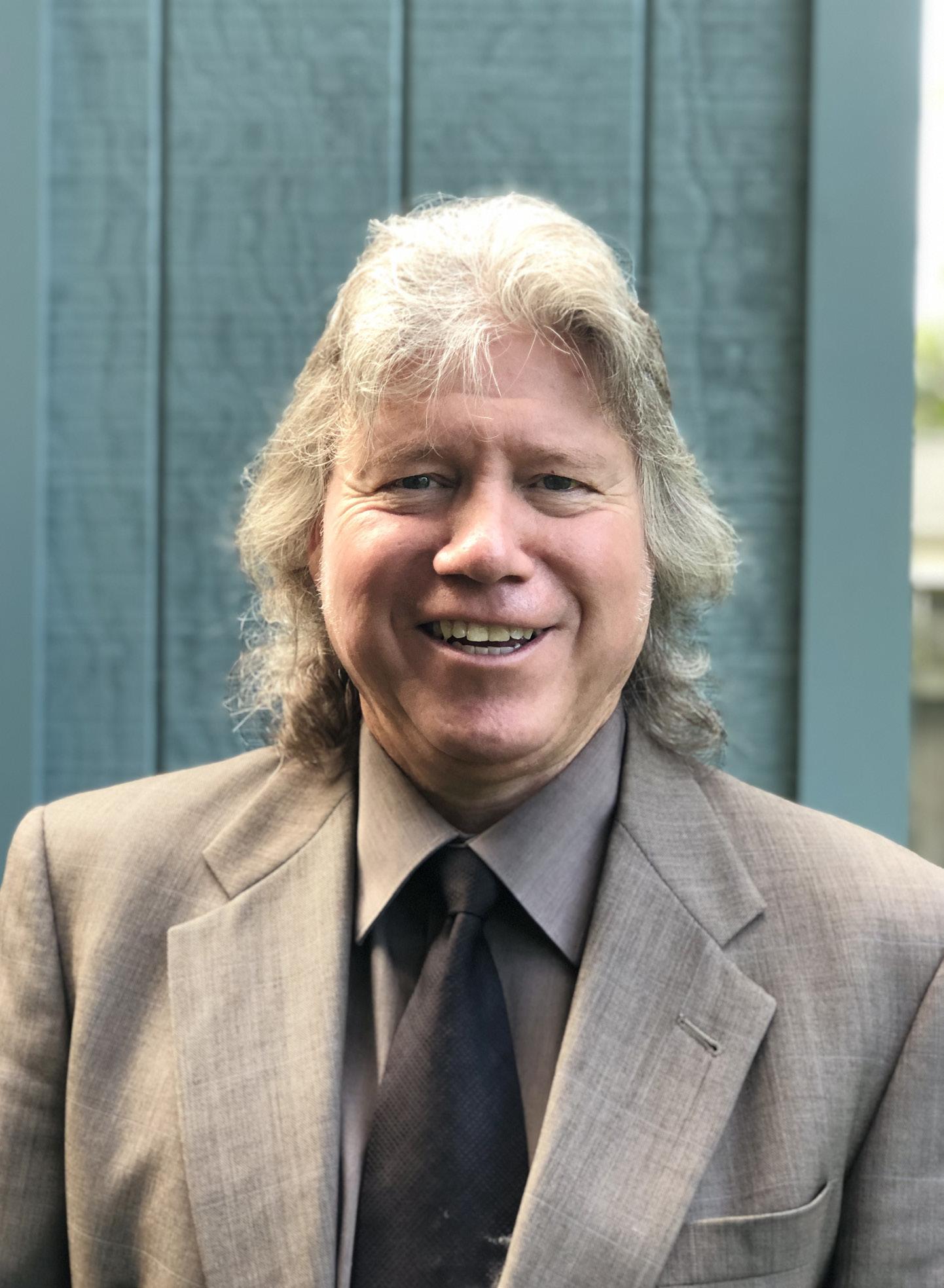
“They told me I’d have the prestige of working for Dartmouth, but I told them that prestige doesn’t feed my family.”
Instead, he went to work for O’Brien & Gere, where he headed its ecological resources group.
“Most of my work was doing ecological risk assessments,” he said.
He spent a fair amount of time in Florida, traveling there four times a year for a week or two, studying what happened to the rocket fuel used at Cape Canaveral and the Kennedy Space Center. While the aeronautical work certainly affected the environment, the one plus was that thousands of acres were protected from residential encroachment. His work helped protect the robust wildlife there — including 500 of the remaining 2,000 manatees, the highest concentration of sea turtles in North America. The region is the flyway for hundreds of thousands of migratory birds.
In 1996, he was hired by HydroQual Inc., a New Jersey-based company that allowed him to continue to do the same kind of work while traveling to New Jersey one day every two weeks.

In 1999, he was hired as president by the Onondaga Lake Cleanup Corp. He helped the nonprofit gain a large EPA grant, and he has been there ever since. In August 2006, the OLCC changed its name to the Onondaga Environmental Institute and in December 2006, expanded its mission beyond Onondaga Lake. He is proud of OEI’s contributions to the Onondaga Lake Partnership, Save the Rain Program, environmental justice projects with underserved southside communities, sponsorship of the Partnership for Onondaga Creek and Onondaga Earth Corps, and membership in the Urban Jobs Task Force.
By this time, he was thoroughly enmeshed in DeWitt town politics, although he wouldn’t have predicted that years before. In the 1990s, he started advising the town board on environmental issues. He then ran for the town board seat that was vacated by the newly elected town supervisor, Jim Guyette. Michalenko was elected in 1996 to complete Guyette’s term, then was reelected to four-year terms in 1997, 2001 and 2005.

Michalenko said he never intended to run for DeWitt town supervisor, but
he changed his mind in 2007 because he opposed a plan to build a coal gasification plant in the town. He won and he has served ever since. He is in his eighth two-year term. In 2021, he ran unopposed after defeating Republican opponents every other time.
Over 15 years, here are some of the DeWitt projects he has spearheaded, most related to improving the environment:
• Widewaters Pond Project and Elevating Erie
• Local waterfront revitalization planning documents
• 2.66 megawatt and 51 kilowatt rooftop solar arrays
• Carrier Park
• Electric vehicles and charging stations
• LED streetlights conversion
• Inland Port development
• Town Hall net zero energy efficiency designs
• Fiddlers Green Park formation and expansion
• Butternut Trail Park System expansion
• Empire State Trail enhancements
• Water system infrastructure improvements
• Stormwater programs
• Ley Creek naturalization and flood control projects
He recently turned 65 and he’s been married 41 years. Along with his four children — three of whom live in the area — he has six grandchildren, ranging from almost 1 year old to a freshman in high school.
“They’re just the joy of our lives,” he said of the grandchildren, who all live nearby.
He’s equally proud of Mary Ellen, who is still a teacher. She runs what might be the closest thing to a oneroom schoolhouse in Central New York. Through BOCES, she teaches students of all ages who have endured various medical crises, in a classroom at Upstate Golisano Children’s Hospital.
He said he hasn’t decided yet whether to run again. But he talks like he might seek another term.
“I never enjoy elections, but I very much like what I’ve accomplished,” he said. “I describe it as a moth attracted to a flame. As long as I’m getting things done and the public wants me, I’ll stay in.”
 By Harold Miller Email: hmiller@mcsmms.com
By Harold Miller Email: hmiller@mcsmms.com
Nearly a decade ago, I road tested one of the first electric vehicles for our local Syracuse utility, Niagara Mohawk. I remember the feeling was quite different. No gearshift, no clutch — smooth (and fast) acceleration.
The handling was a bit stiff because of high pressure tires (to minimize road friction) but there was no exhaust smoke.
Today, every major automobile manufacturer is developing electric vehicles, but currently only 2% of cars on the road are electric.
Our government is strongly promoting and subsidizing EVs. The most obvious advantage is eliminating pollution — particularly in major cities along both coastlines. Pollution can take the form of any substance, solid, liquid or gas.
Another variation of electric vehicles is plug–in hybrids.
A combination of a gasoline internal combustion engine and plugin batteries (EVs), However, according
to JD Powers the hybrids have about 40% more problems than simpler EVs at this time.
The person who is the biggest factor for the future of electric vehicles, without a doubt, is Elon Musk.
He recently gathered his management team together (he called them his investment team). Usually his cars are the stars of Tesla Inc.’s management team —even if Wall Street wanted an update on their efforts to develop a new cheaper electric car.

Investor day’s message is that the company is bigger than just Elon Musk. His goal is to boost deliveries of Tesla cars to 20 million next year from last year’s 1.3 million. However, in order to achieve this he will have to extend their range. My five-passenger BMW with a 350 horsepower, dual turbo engine, has a range of 550 miles. I have not encountered an electric car of equal performance that has a range of more than 300 miles.
General Motors has pledged all
of its vehicles will be electric by 2035. All of U.S. carmakers will probably fall in line.
Toyota, the world’s largest vehicle manufacturer, is silent about its plans for the future. But you can bet that Asian car makers will not let the world go by — and neither will European vehicle manufacturers.
I have a couple of thoughts about the future of vehicles.
There are several forms of nonpolluting energy such as nuclear and hydrogen which can be applied to vehicles and does not pollute.
I have read that a miniature nuclear plant could be applied in your vehicle and a tablet could energize it for a year or so, like the tiny battery in your electric watch.
The ‘waste’ from hydrogen is water.
Sooner or later our planet will run out of fossil fuels, so we might as well start using renewable ‘green’ energy now.











Most people look toward retirement as a desirable time. People save money and assets with the intent of eventually retiring and leading a life of luxury.

The retiree has lots of leisure time, can sleep late every morning and doesn’t have the stresses or obligations of the workplace.
Retirees can travel to all the exciting places that they could only dream about when working. Retirees can pursue hobbies with enthusiasm and have the time to pursue new hobbies.
Except for spouses, retirees have no boss to cater to. Retirees can do whatever they want whenever they want to.
But retirement has one major drawback that retirees cannot escape, namely, aging.
Usually, retirement occurs as people reach the pinnacle of their lives. No matter what we do, the body ages, and retirees are bound to get something they don’t want.
Oftentimes, when retirees go to a doctor for a check-up, they find out that they have some ailment that they didn’t even know they had. Regular exercise becomes an obsession, but the body doesn’t work as well as it did in earlier life. The days of running a marathon are gone forever.

After a lifetime of activity, I retired in 2009. They told me that, if I waited until later to draw upon Social Security, I would get more money. My response was, “This is later,” and I started getting Social Security as soon as I could.
I had a fantastic set of activities and involvements as my life unfolded. I never thought much about what I was doing. I just did it and life just
happened. My dear, deceased wife, Pat, worked with me and guided me through life. I was never very good at mechanical things or technology. I always told Pat, “I’m paid to think!”
I had innovative ideas, but Pat did the work, and I got the credit. My career as a faculty member at Syracuse University was wonderful. Being a professor is hard work, despite what some people think. You are on the job day and night seven days a week, carrying out some academic or other responsibility. However, being a professor has its virtues, Basically, you can do whatever you want to do and they pay you. You interact with young people, do research and teaching, and nobody tells you what research to do. Travel is also a great benefit and there are also good retirement benefits.
Most new faculty members are concerned about getting tenure and promotion. I never worried about
this. I simply did my “thing” and it happened. I always told students to plan their life, but I never did.
Through grants and fellowships, I was able to travel to many parts of the world. Among my many travels, I visited Australia, New Zealand, Tasmania, Tahiti, Hawaii, the Great Barrier Reef, the Galapagos Islands, Bali, the Bahamas, Puerto Rico, Bermuda, Mexico, Canada, Israel, Egypt, Great Britain, Japan, China, India, South Africa, Morocco, many European countries, such as Switzerland, Poland, Germany, France, Spain, Portugal, Greece, Italy, etc., and places all over the U.S. In fact, there are few places I would want to visit where I haven’t already been. These visits were topped off by two Viking River Cruises in Europe.
Each travel site offered some special experiences that helped shape my life.
I also had the privilege of serving as president of three international science education organizations, i.e., the National Science Teachers Association (NSTA), the Association for Science Teacher Education (ASTE) and twice president of the Society for College Science Teachers (SCST). I was also chairman and secretary of the Education Section of the American Association for the Advancement of Science (AAAS). NSTA is the largest science teacher organization in the world and AAAS is the largest multidisciplinary scientific society in the world.
Two of my most important accomplishments in life were to have taught science to an estimated 50,000 students and to have had a wonderful wife, three children and seven grandchildren. When I boasted to a friend that I had taught 50,000 students in my teaching career, he commented, “Yes. You have influenced and offended many people.”
I had already done so much before retirement that I wondered if there was anything exciting or worthwhile left to do?
Retirement is a good time to reflect on the past and the future. My suggestion is to identify those activities that you really enjoyed before retirement and to set a pathway for new activities. I believe the worst thing you can do in retirement is to say, “I worked hard all my life, and now it’s time to sit around, rest and do nothing.”
Regular exercise (health permitting) is a compulsory activity in retirement. No matter what you do, physical and physiological functions decline with age, but, as a physiologist told me, these decline more slowly if you exercise regularly. No matter what, your body eventually slows down and you can’t do what you did when you were 20 years old. Also, health issues inevitably arise and we have to make adjustments accordingly. We all have to be realistic about retirement, although this may be difficult.
I decided to unretire and adjust my activities to fit reality. In my unretirement, I continue to offer a radio program on WAER-FM 88.3 (i.e., Science on the Radio).; I resumed organizing a Saturday enrichment program for talented high school students in the Syracuse are (i.e. Frontiers of Science); I continue to be
a columnist for 55-Plus magazine and contribute six articles a year; I continue to conduct historical SU campus tours for SU staff, faculty and students; I published a book of poems for children and adults (“Strange Creatures and Other Poems About Life”); I intend to resume doing poetry readings at elementary schools in the Syracuse area; I avidly read non-fiction books and I am writing a sequel to my published book “The Misadventures of Marvin” (Syracuse University Press); (the new book will be “More Misadventures of Marvin”); as sports enthusiast, I continue to follow the play of my favorite teams on TV; I even have developed a long-term relationship with an attractive woman (Victoria) that soothes the loss of my wife in 2014.
As an unretiree I intend to pay more attention to my family. I have a brother, a sister, a daughter, two sons, seven grandchildren and in-laws. All of them have been incredibly attentive to me and their love and passion are supporting pillars for my unretirement.
So, my advice to retirees is to ponder your past and plan realistically for your future. My guiding theme is to try to DO MORE before you HAVE to do less.
I wrote this article just before going to bed at night and I had an unusual dream.
Usually, we do not remember the details of dreams, but this one seemed real and bizarre. I dreamt that I was jogging in Colorado with a friend who I traveled with for the Project Advance program at Syracuse University. This program offers firstyear college courses to high school students for college credit. I was chatting while jogging (which was not unusual) when my friend whose wife had recently died stopped jogging and asked me, “Do you mind if I jog with my wife instead of with you?” “Of course not,” I said, and I continued jogging without him. The blue sky and scenery were strikingly beautiful. In my sleep, I actually believed that I was jogging smoothly and effortlessly, as I experienced the beauty of my surroundings. Then I awoke. I realized that age had caught up to me and jogging smoothly and effortlessly was no longer a reality. I stayed in bed awhile and thought, “Maybe there is a heaven for unretirees after all?”
NY Connects…

Is an Information and Referral Program for people of all ages, any disability and caregivers.
can work with anyone who needs information on long term services and supports.
can help you find care and support, understand care options, find transportation, find supported employment programs, get answers about Medicare, apply for Medicaid and other benefits.
NY Connects of Oswego County 315-349-8697 or 1-800-342-9871 NYConnects@OswegoCounty.com www.nyconnects.ny.gov

Brewerton - 676-2333
Camillus

 By Michele Bazan Reed Email: bazanreed@hotmail.com
By Michele Bazan Reed Email: bazanreed@hotmail.com
One of my favorite photos in the old family album is of my mom and me on Easter Sunday 1957. There we are in our holiday finery — cotton coat, matching Sunday best dress — both outfits sewn by my mom.
That was only one example of clothes, quilts, afghans and embroidery my mom made over the years, and when I got a little older, she introduced me to the mysteries of the bobbin, needle and thread that made it all possible. We sat for hours at the old Singer while my mom practiced the virtue of patience as I sewed seams of wavering widths, clipped darts making holes in the garment and pinned up uneven hems. Soon though, I was competently making my own clothing — first simple doll outfits and later clothes I actually wore to school. Imagine teens today wearing homemade outfits to school! But many boomer peers tell me they remember sewing their own clothes, too.
I followed my mom’s example, getting into quilts, building an impressive stash of fabrics and patterns. For the 1976 Bicentennial I started a red, white and blue pinwheel quilt, all sewn by hand. I only managed to get enough done to make enough squares for two small throw pillows.
When I had a daughter of my own, Katie accompanied me on shopping trips to the fabric store, acquiring more fabrics than I could use in a lifetime. She loved the colors and patterns, and I’d make her outfits and doll clothes. She got a double dose of sewing and crafting passion from my husband, Bill’s, grandmother, who sewed clothing and quilts for all of her kids and then grandkids, great-grands and great-great grands.
Now, it’s all come full circle. Katie has gotten interested in designer fashions of the 1960s and ‘70s.
Shopping on consignment and auction sites as well as estate sales, she’s managed to build a nice collection of vintage clothing. But a recent estate sale find changed everything. She scored a big stash of original fabric by her favorite designer, various patterns and yardages. Now she was inspired to try her hand at the family passion. She purchased her first sewing machine — a far cry from great-grandmother’s treadle machine or my mom’s midcentury Singer — Katie’s has 37 stitches!
She loaded up on practice fabric — cottons, canvasses and knits she’d eventually be sewing into ’70s fashions.
I have to admit, she’s better than her mother — by the end of the month she’d made two tote bags and a couple of pencil cases, manipulating canvas and cotton into usable gifts for family and friends. She even tried her hand
at a knit top — something I’ve never mastered.
My son, Mike, got a couple of hobbies from his forebears, too. My father was always tinkering with cars, specifically the Willys Jeeps that reminded him of his World War II experience driving jeeps and ambulances for the 2nd Evacuation Hospital in Europe. He always had a “project jeep” and one or two for parts in our backyard. Mike was just a teen when he picked up a wrench and he restored his own succession of bargain cars. He’s in his 40s and never has had a car payment. The car passion led him to a career with a local dealership.
Bill’s grandfather was a carpenter and Mike took up woodworking a few years ago. After building furniture until he had no more space in his big house, he turned his hand toward custom guitars. He can take a slab of

wood and turn out a playable — and beautiful — electric guitar using his routers, planer and fret files.
Passing on our passions is one of the best ways we can bond with our kids and grandkids. Whether you love crafting or painting, reading, hiking or gardening, share it with a young person in your life. A session spent together, learning and laughing builds bonds and passes on useful skills to a new generation.
And if you don’t have grandkids of your own, see if your local school or library would like a demonstration of your passion.
There are plenty of YouTube and TikTok videos where young people can learn new skills. But there’s nothing
like spending some quality time with a grandparent, learning something they are passionate about. And the oldtime tricks and tips, learned through decades of experience, are priceless. You don’t have to be an expert, either. Your time and attention are the best gift you can give your grandkids — the hobby skills are just a bonus. And even if you lack special skills, you can enjoy the experience of learning together. Always wanted to paint? What child doesn’t love making a masterpiece — and a mess? Why not explore art together?
Pass on your passions and who knows? You may just come away energized to ignite an old hobby or start a new one.
A purchase of
One of the first projects — a canvas tote bag. The author enjoys a pencil case sewn by her daughter.


 CAPTION: The author’s son, Mike, uses the woodworking skills he inherited from his greatgrandfather to craft custom electric guitars.
1970s designer fabrics inspired Katie to try her hand at the sewing skills she grew up watching her mom and great-grandmother practice.
CAPTION: The author’s son, Mike, uses the woodworking skills he inherited from his greatgrandfather to craft custom electric guitars.
1970s designer fabrics inspired Katie to try her hand at the sewing skills she grew up watching her mom and great-grandmother practice.
New York state is blessed with waterways which allow access to all parts of the state. Throughout the years the waterways were used by Native Americans as they hunted and traded, then came the explorers, namely Henry Hudson.
Hudson was followed by ship after ship loaded with settlers. They settled along the waterways creating towns, village, and cities. They built dams to harness the waterpower and then canals to ship their products.
Today those waterways are still used but no longer bustling as they previously were but the scenery and history along the way make for fascinating travel.
Many businesses offer a variety of options including scenic, dinner and sunset cruises. It is not necessary to own a boat to enjoy the beauty of New York state by water — there are plenty of companies offering tours.

The Erie Canal system is 365 miles long and spans Albany to Buffalo. There are boat tours on several sections of the Erie Canal but the best way is on a traditional packet boat multiday rental from MidLakes Navigation. The canal is free and there are lock tenders to aid in locking through. Along the way there are tie-up areas, some with electricity and other amenities. There are also many day tours to choose from.

Most people know Manhattan is an island but the best way to appreciate the entire island and its waterways is on Circle Cruise all the way around Manhattan Island. The guided boat tour takes in every angle of New York City’s iconic waterfront with unobstructed views of the Manhattan skyline, the Brooklyn Bridge, and the Statue of Liberty. The 2.5 hour cruise passes by all five of New York’s boroughs.


There are several places to take a boat trip on the Hudson, including Kingston, Newburgh, Poughkeepsie, Peekskill and Albany. The Evening Star, from Peekskill, is a former US Coast Guard Buoy Tender converted to a 36-passenger tour boat. The Evening Star gives folks an opportunity to witness the spectacular beauty of the land and the rich history woven in and out of the Hudson Highlands.
Blount Small Ship Adventures offer a couple of two-week cruises that include the Hudson River and portions of the Erie Canal. One option travels between New York City and Quebec. It includes the Oswego Canal, Lake Ontario, and the St. Lawrence River along with the locking through the St. Lawrence Seaway. There are many stops along the way.

There are several boat tours on lakes in the Adirondacks. Check out the scenic cruise aboard the W. W. Durant on Raquette Lake. The boat’s namesake, William W. Durant, was the designer and developer of the camps in the Adirondacks now referred to as the Adirondack Camp Style or Great Camp Style. The lakes became the preferred getaway for the wealthy in the late 1800s, including the Vanderbilts and Carnegies. The “camps” were actually rustic mansions surrounded by the forest. Learn about the lake and how the scene has changed over the years on 90-minute sightseeing cruise.

The most popular way to experience the Niagara River is on the Maid of the Mist which offers up-close and personal views of Niagara Falls. Be prepared to get wet. For an adrenalin rush experience the Whirlpool Jet Boat Ride. Out of Buffalo there is a 90-minute afternoon river cruise where one can learn about the waterways that turned Buffalo into one of the biggest and richest cities in the world.

The Lake George Steamship Company offers a variety of seasonal cruises but the most interesting is the six-hour complete tour of the lake on the Mohican. The Mohican, built in 1908, has been offering tours for over 100 years. The fully narrated cruise offers views and information about the mountains, islands, historic mansion, and the lakes current ecological balance.
The Finger Lakes are beautiful but most people only see them from the shores or the roads running along these scenic lakes. To get the full effect of the Finger Lakes you have to get on the water itself. Several of the Finger Lakes have boat tours including Seneca, Canandaigua. Skaneateles and Cayuga. One unique trip on Skaneateles Lake is aboard the mail boat.



The New York section of the St. Lawrence River is home to the famed 1000 Islands. There are several companies offering tours of the area including Uncle Sam Boat Tours. Some tours include stops are Boldt and Singer Castles plus a cruise by Millionaire’s Row. The “Night Heron” out of Clayton is a glass bottom boat. The narration on the nearly three hour tour focuses on the ecology of the river. The Antique Boat Museum in Clayton offers a 45-minute ride in 30-foot triple cockpit Hacker Craft.
Looking for an adrenalin rush? If so, check out whitewater rafting on the Black River, Moose River, or the Hudson River. May and June rafting offers the biggest thrills as that is when the rivers run the fastest. Between the rapids there are spells of tranquility for rafters to catch their breath and enjoy the unspoiled splendor of the area. There is also lazy river tubing on the Black River. One company offers an overnight rafting adventure on the Sacandaga River.
For a variety of reasons, some older adults need help when it comes to the task of paying their bills.
People in the “sandwich generation” caring for their teenaged children and elderly parents may want to take one more chore off their list.
Snowbirding or other travel can mean mail goes to different addresses at different points of the year. People who struggle with vision problems, manual dexterity or cognition find that filling out paper checks accurately can be challenging.
Some newly widowed people have never handled finances before and feel bewildered facing this new challenge. Nearly all companies accept automated billing. Many banks provide means to pay bills directly without paper checks after signing up for online banking.
One of the impediments to choosing autopayments is fear of overdrawing an account “if you don’t keep accurate records of your balance,”
said Cynthia Scott, president of OMC Financial in Dewitt. “Bills can increase without your knowledge.”
A computer or clerical error from the billing company can clean out an account. However, banks work with clients to restore overdraft penalties in these cases. Variable bills can also cause unexpected shortages, such as a utility bill, unless account holders keep a close watch on the funds.
“It becomes an automatic process, which you don’t monitor,” Scott said. “You should. It encourages complacency and I think you lose accountability for your own expenses. It’s not losing control, but awareness of what your bills are and what you’re paying out.”
For some people, writing paper checks feels more comfortable because of the familiarity of the ritual and because it seems like the process is entirely within their control. However, that is not entirely true. Writing down the wrong address, forgetting to apply
a stamp, unclear handwriting, checks lost or delayed in the mail or the wrong account number may derail even this tried-and-true method of bill paying.
Once established, autopayment places the process within the control of technology. However, it is not without proper oversight. Online banking allows customers to look at their accounts anytime to ensure the balance is sufficient and the bills have been paid. Most banks provide automatic bill paying and automatic transfer services to ensure seamless bill payments. A notification email or text alerts customers that bills have been paid.
Autopay offers numerous practical advantages.
“If you’re traveling, you don’t have to worry about it,” Scott said. “If you are ill and can’t take care of your own finances, the bills are paid. There are also weather disruptions. Or what if a family member needs your assistance and you’re constantly going over to take care of them? Your own bills are attended to. That’s one less thing to do.”
In addition to automating payments, digitizing statements will make bill paying even easier, especially for snowbirds.
That way, “their bills are not being
mailed to their house and then subject to forwarding issues or just being left in the owner’s mailbox where theft of the info is possible,” said Randy L. Zeigler, certified financial planner and private wealth adviser with Ameriprise Financial in Oswego. “They can then check their email while in Florida and review bills sent to them and being paid, while not having a mailbox issue.”
Paper bills are easily mislaid. If reading fine print becomes problematic, electronic bills may be easily enlarged by pressing Ctrl while scrolling the mouse wheel up or other means of zooming.
Zeigler suggested using a credit card for automatic bill payments, as they’re not susceptible to overdraw problems like a bank account and so payers are “protected by fraud provisions covering credit cards and so access to checking accounts is limited to only highly secure vendors,” Zeigler said. “It is better to not give too many vendors access to one’s checking account as these balances are not as securely protected from theft and fraud.”

Setting up autopay can help people stay more independent later in life. If issues such as poor vision, cognition or fine motor control make it difficult to write checks to pay bills, having autopay already in place “can make a way of making sure their needs are met while remaining relatively independent,” said Nina Kohn, a David M. Levy professor of law and faculty director of Online Education at Syracuse University College of Law.
People with limited means may not prefer autopay because they need to first make sure they have the money in the account to cover variable bills. Kohn stressed that of all bills to consider for autopay, rent or mortgage, critical utilities, auto insurance and long-term care policies are the most important because of the fallout if they’re late.
Kohn said that for those uncomfortable with autopayment, enlisting a trusted third party to write out checks or hiring a bill paying service may be helpful.
She added, autopayment “can be a valuable convenience to help people manage in an increasingly complex world. Just make sure it’s not ‘do it once and forget it.’ You still need to monitor it.”

Enjoy your retirement without all the fuss and consider a move to Springside at Seneca Hill! Springside provides a warm, caring environment for active seniors ages 55 and older, with services and support programs designed with independent seniors in mind. This attractive facility offers one- and two-bedroom apartments in a congregate living environment, as well as newly renovated one-story duplex-style homes and cottages which feature two bedrooms, two baths and a garage.


schools. We had the challenge, when this started back in ‘08-‘09, of figuring out how to sustain the promise. There are hundreds of kids every year who are engaged in this and who receive financial benefit in the form of lastdollar scholarships and other financial support to enable them to attend and stay in college. We were able to create a $30 million endowment. That was the combination of challenge gifts from local corporations, individual philanthropy from donors here and local foundations. One of the most remarkable things was a $20-million grant that we received from New York state as part of the Upstate Revitalization Initiative to match the $10 million that had been contributed locally. I think that’s really remarkable, in particular because I’m not aware of another situation of a foundation really anywhere in the United States that has been the recipient of an endowment gift from a state government to really help sustain a program for the benefit of kids like this in any similar way. (Last-dollar scholarships fund the rest of the cost of schooling after all other financial aid and scholarships are applied.)
Q: Why are you stepping down?
A: I’m stepping down in June after 15 years as CEO for a mix of both personal and professional reasons. The Community Foundation is as strong as it has ever been and as we move toward our centennial with a new strategic plan in place, it’s a good time for a transition. My wife and I will be empty nesters this summer with both of our daughters in college. So, we’ll now have the ability to consider new opportunities in other communities.
Q: During your tenure, the organization’s assets have nearly quadrupled. You’ve gone from $110 million in 2008 to $399 million in 2022. How did you attain such growth?
A: When I came here from Los Angeles back in ’08, one of the visions that the board had at the time was that the Community Foundation did need to grow to meet the needs here in the region and the opportunity. We really have had the benefit of being able to look long-term, to be able to engage with our donors over time, to create mechanisms to build confidence so that folks who are charitably inclined knew that we’d be
a continuing resource for the benefit of the community. We’ve seen significant growth across all of the different types of work that we do — the significant growth in donor-advised funds, which are charitable funds that enable individuals and families to be engaged in local philanthropy in partnership with the Community Foundation, instead of creating their own foundations. We also have had a significant increase in charitable bequests. That’s been a real signature emphasis for us.
Q: What do you see as your greatest achievement?
A: I’m really proud of a lot of things that we’ve done in the last 15 years. When I think back on, probably the thing that is most enduring for me would be our work with Say Yes To Education Syracuse. Say Yes is a promise scholarship program for kids in the city schools and it’s also paired with surround supports that have been developed with Onondaga County and other partners to support kids and families in the city
Q: As a leader of the organization that has been involved in helping to tackle some of our community’s challenges, what would you say are some of those hardships that still remain?
A: There are a lot of challenges in front of us here and the data doesn’t lie. We have the worst rates for childhood poverty of any city in the country. We have the worst concentrations of poverty for Black and Latino populations in the country. We have significant wealth and poverty disparities between city and other parts of the county. We have some significant issues around race and coming together that we still need to grapple with. One of the things that I am positive about is that I believe we’ve had really good civic leadership. One of the great things about Syracuse is that, while it’s a big city, it’s not too big to be able to get things done right. There’s like a one-degree separation between people, and you can move things forward. And one of the things that was so attractive to me coming here from Los Angeles, even though I’m an Upstate guy who grew up in Buffalo, we know our challenges. The people have good will and have been willing to move forward.
With emergency rooms across the country experiencing record volumes, it’s helpful to know which conditions professionals say should always be directed to the emergency room and which are better for urgent care.
This list is meant as a guide only and is not individual medical advice. For any life-threatening concerns, dial 911. If you are not certain you are experiencing a medical emergency, you can be assessed at any emergency room.
Abuse (domestic, child, elderly)
Allergic reactions (anaphylactic shock)
Breathing problems:
severe respiratory distress
Bleeding you can’t stop
Burns: severe or smoke inhalation
Choking
Drowning or near drowning
Electric shocks
Eye Injuries
Head trauma with loss of consciousness
Heart attack, chest pain, or chest pressure
Losing consciousness
Suicidal thoughts or severe
psychiatric complaints
Seizure
Severe cuts (lacerations)
Severe pain
Sexual assault
Stroke symptoms
Trauma with signi cant injury
Burns: Minor
Ear infections
Colds
Coughs
Diarrhea
Flu, Cold or mild COVID symptoms
Insect bites
Minor cuts or lacerations that require stitches or glue
Rashes
Skin infection
Sore throats
Sprains and strains
STD (sexually transmitted disease) treatment
Vomiting


